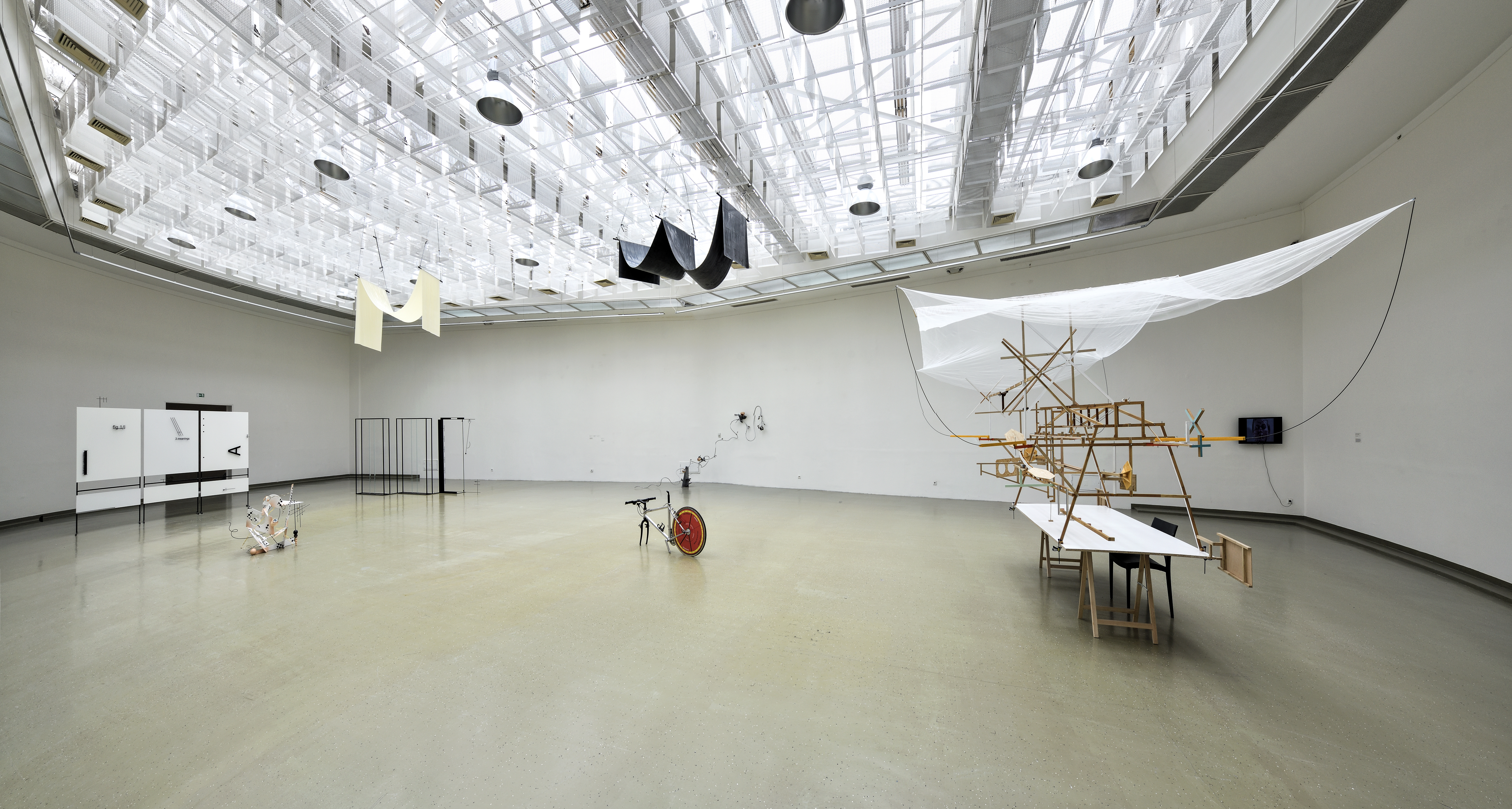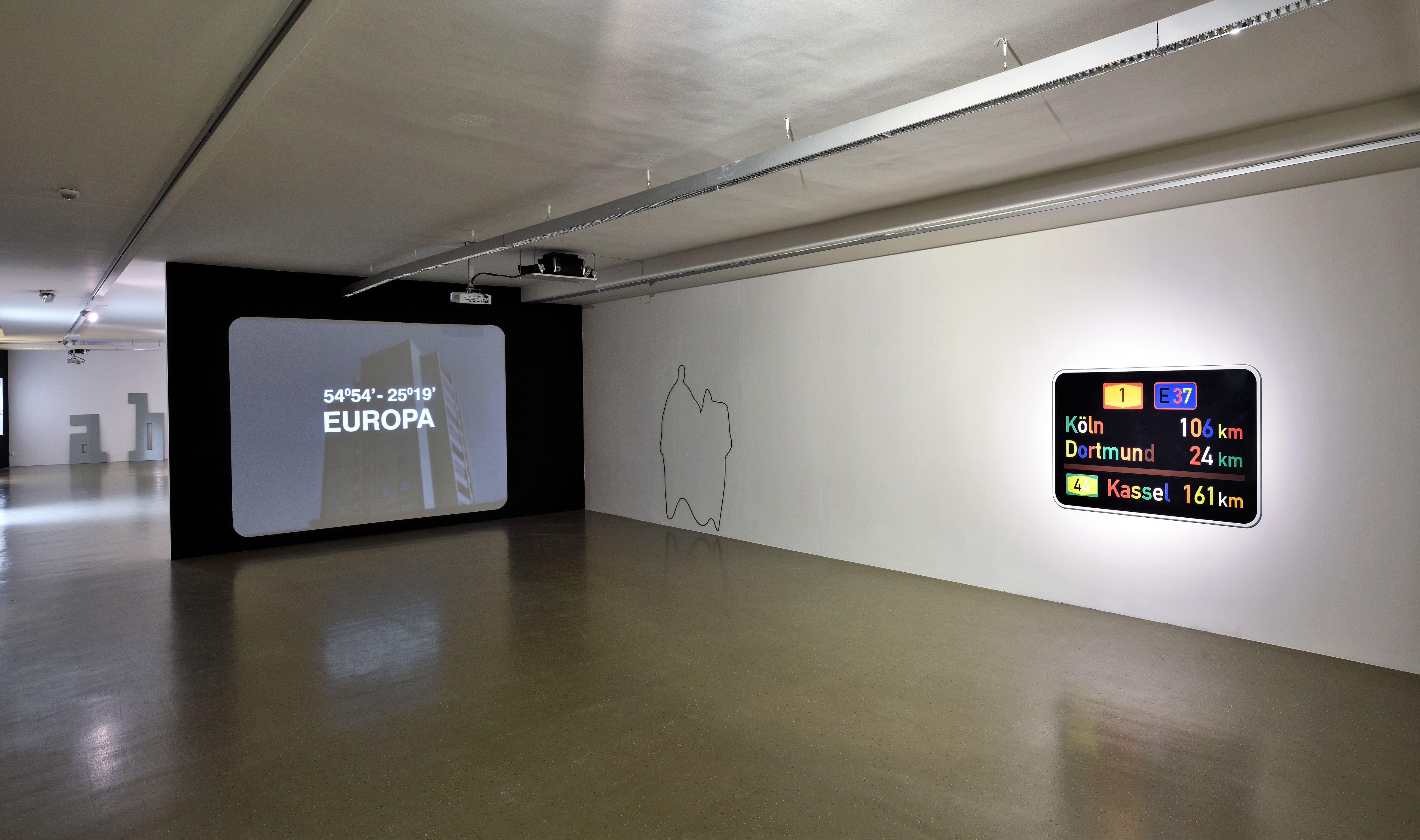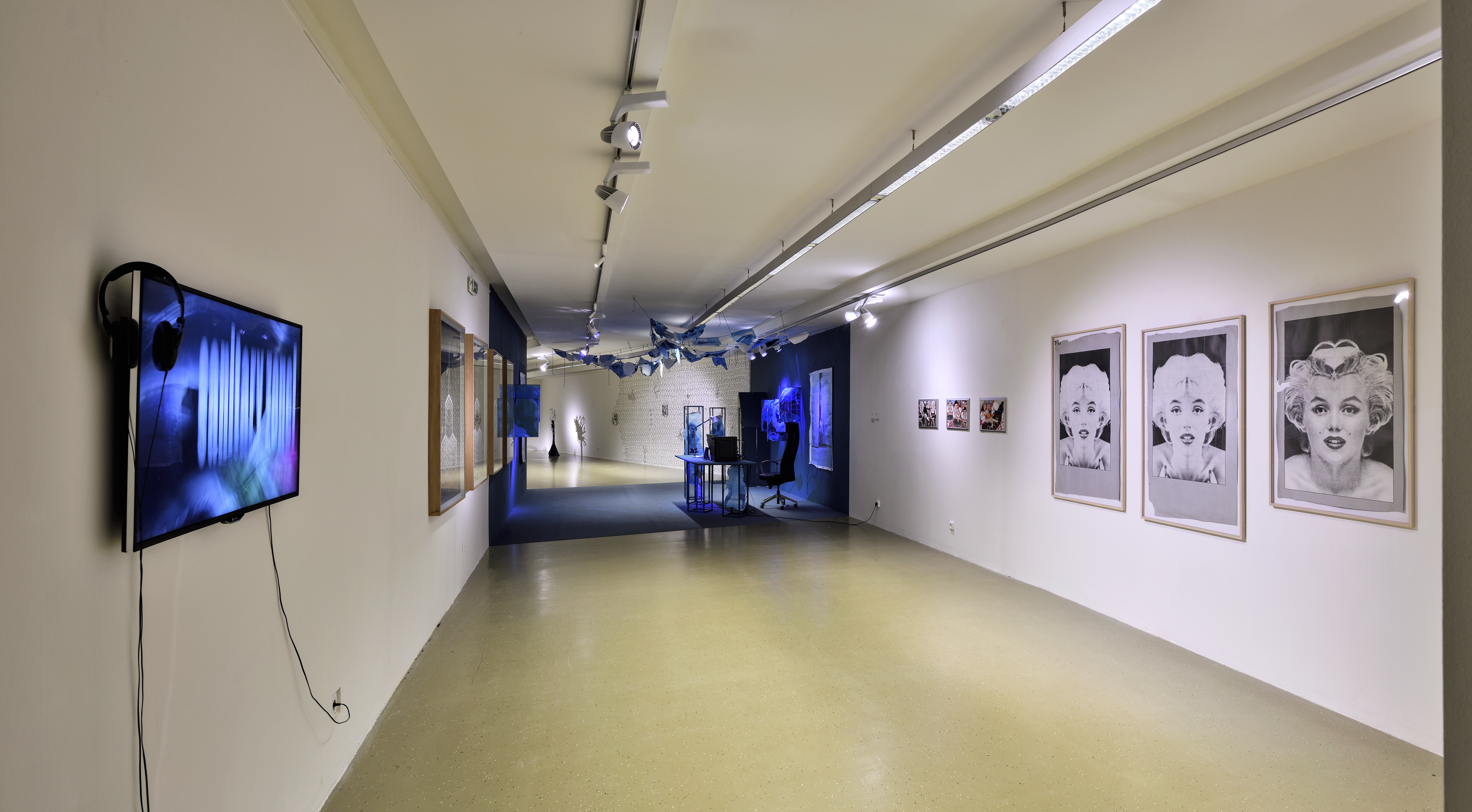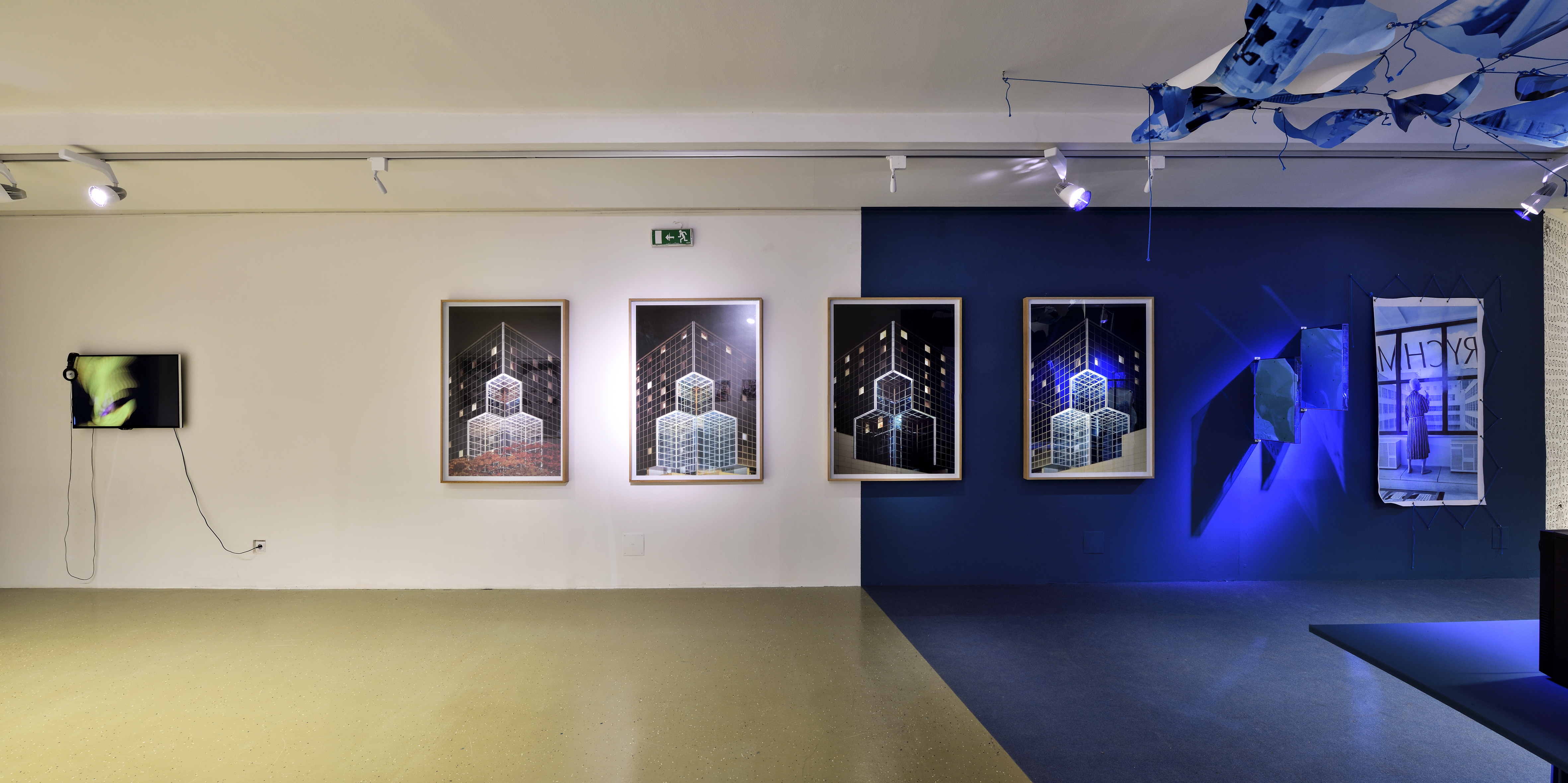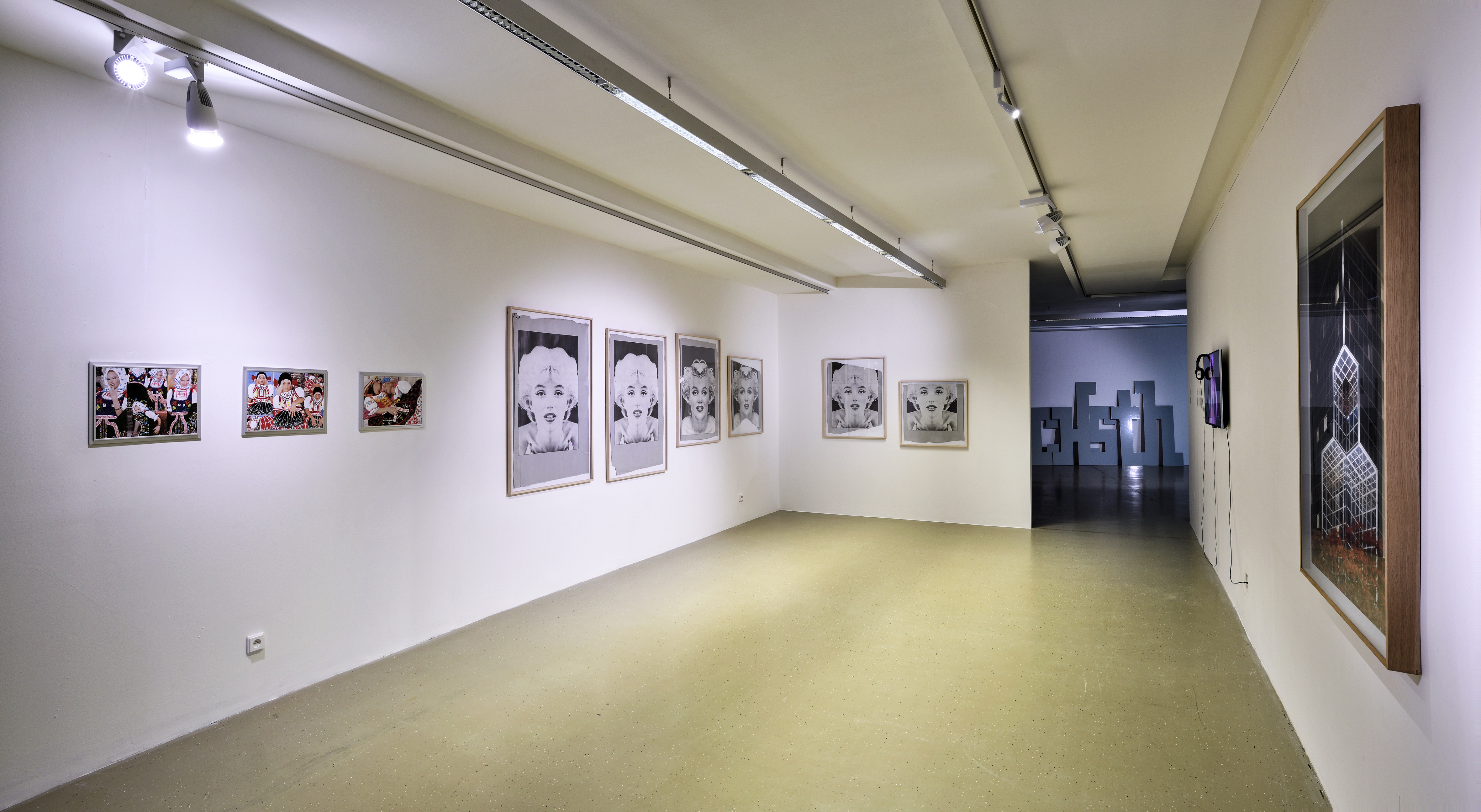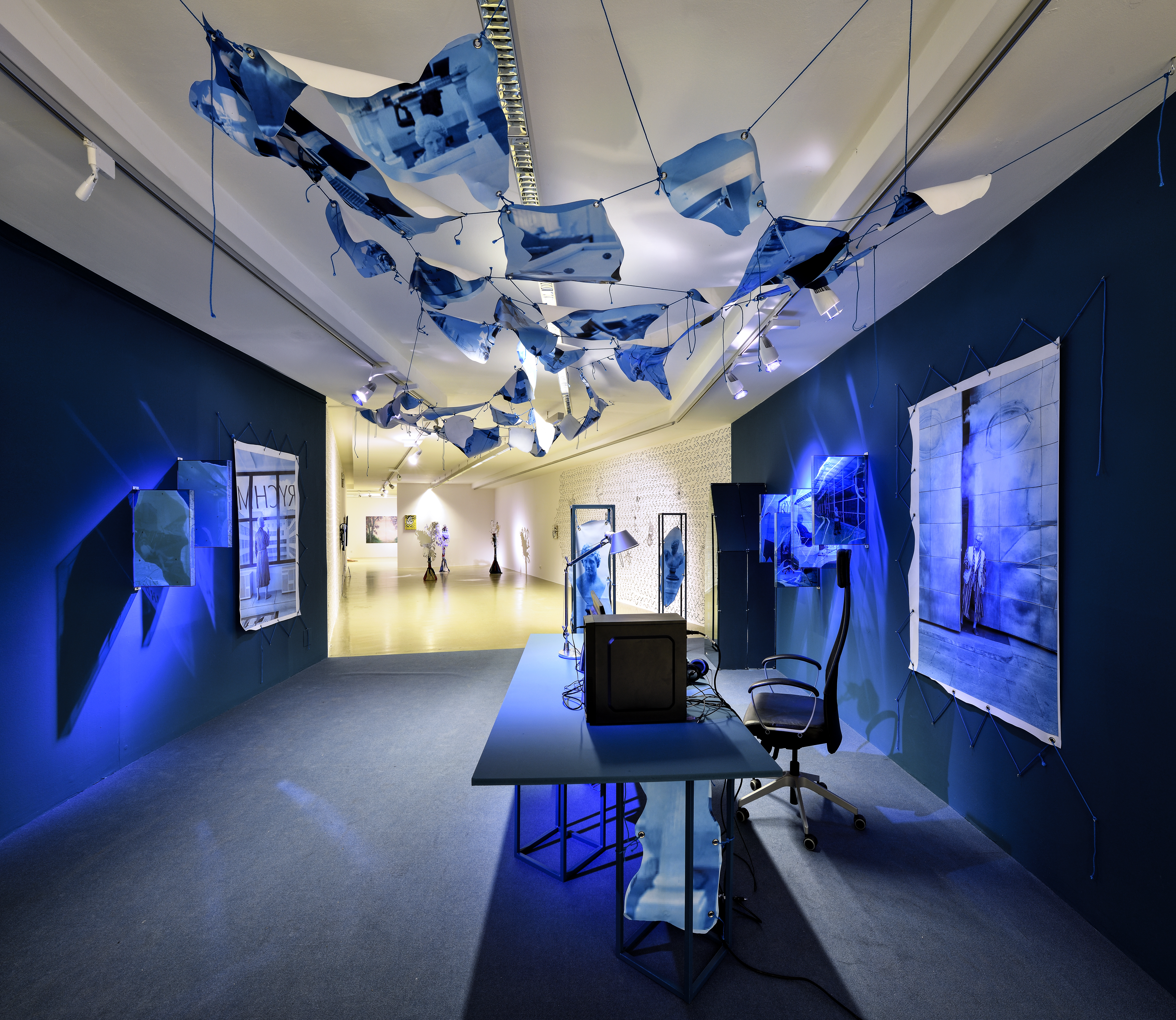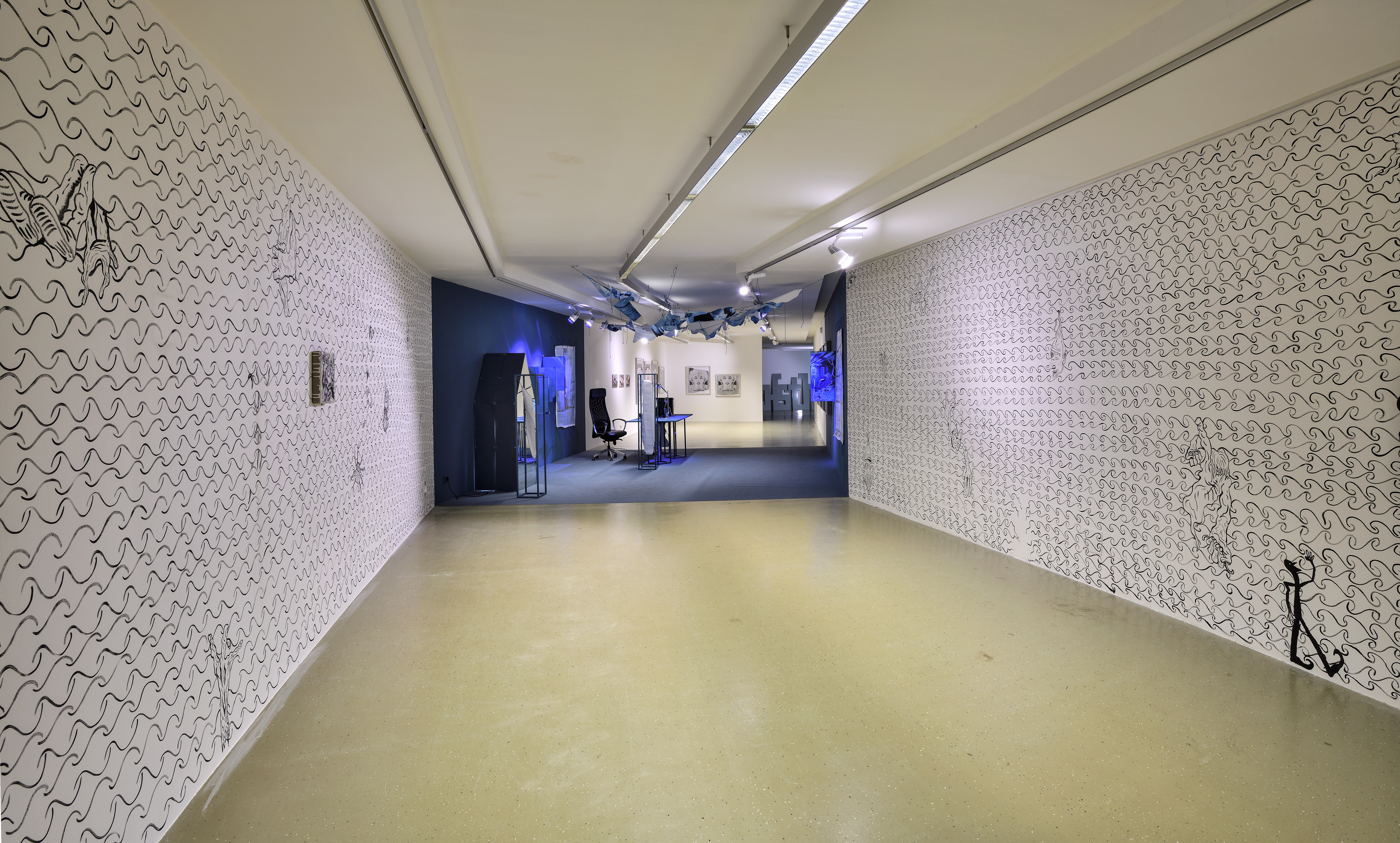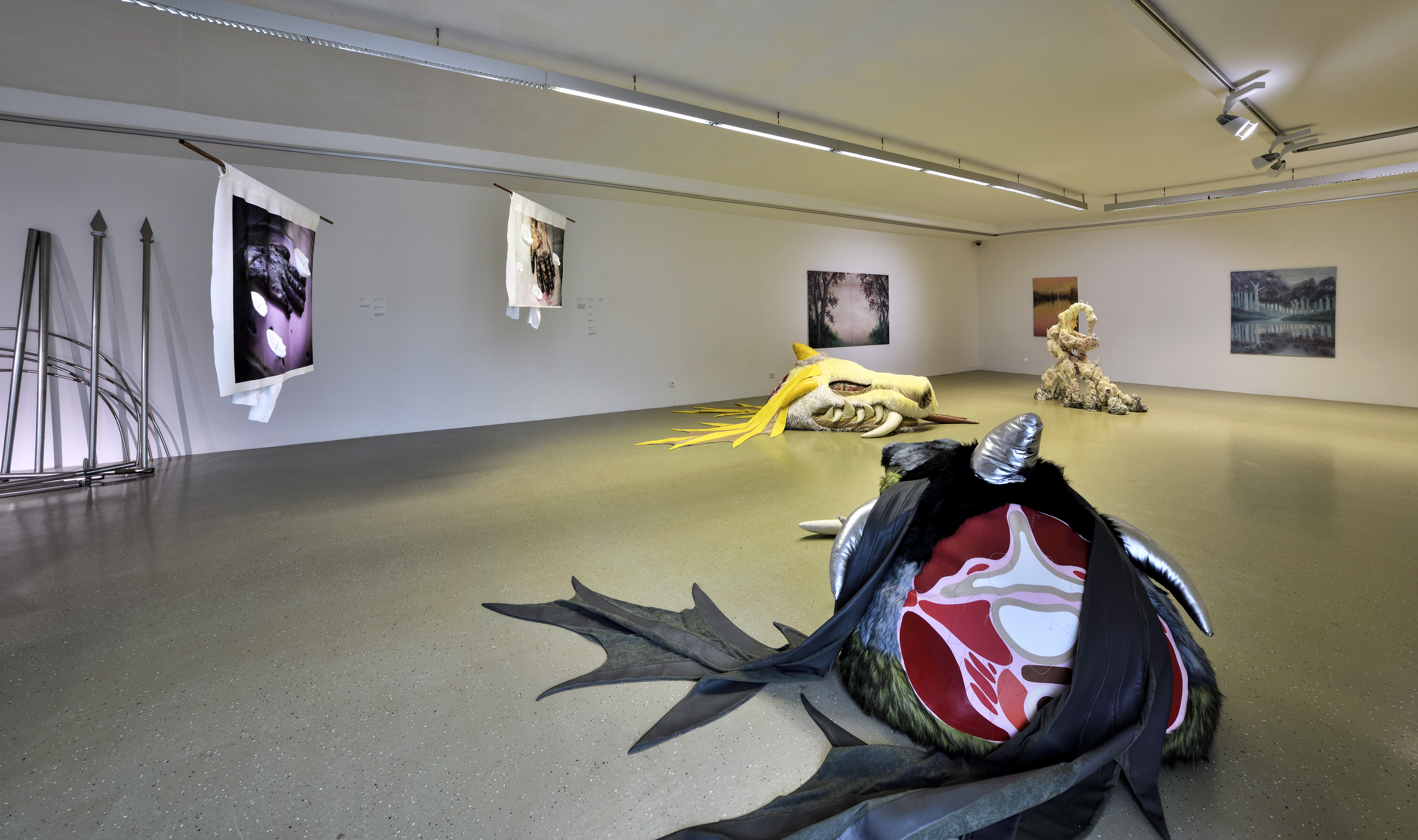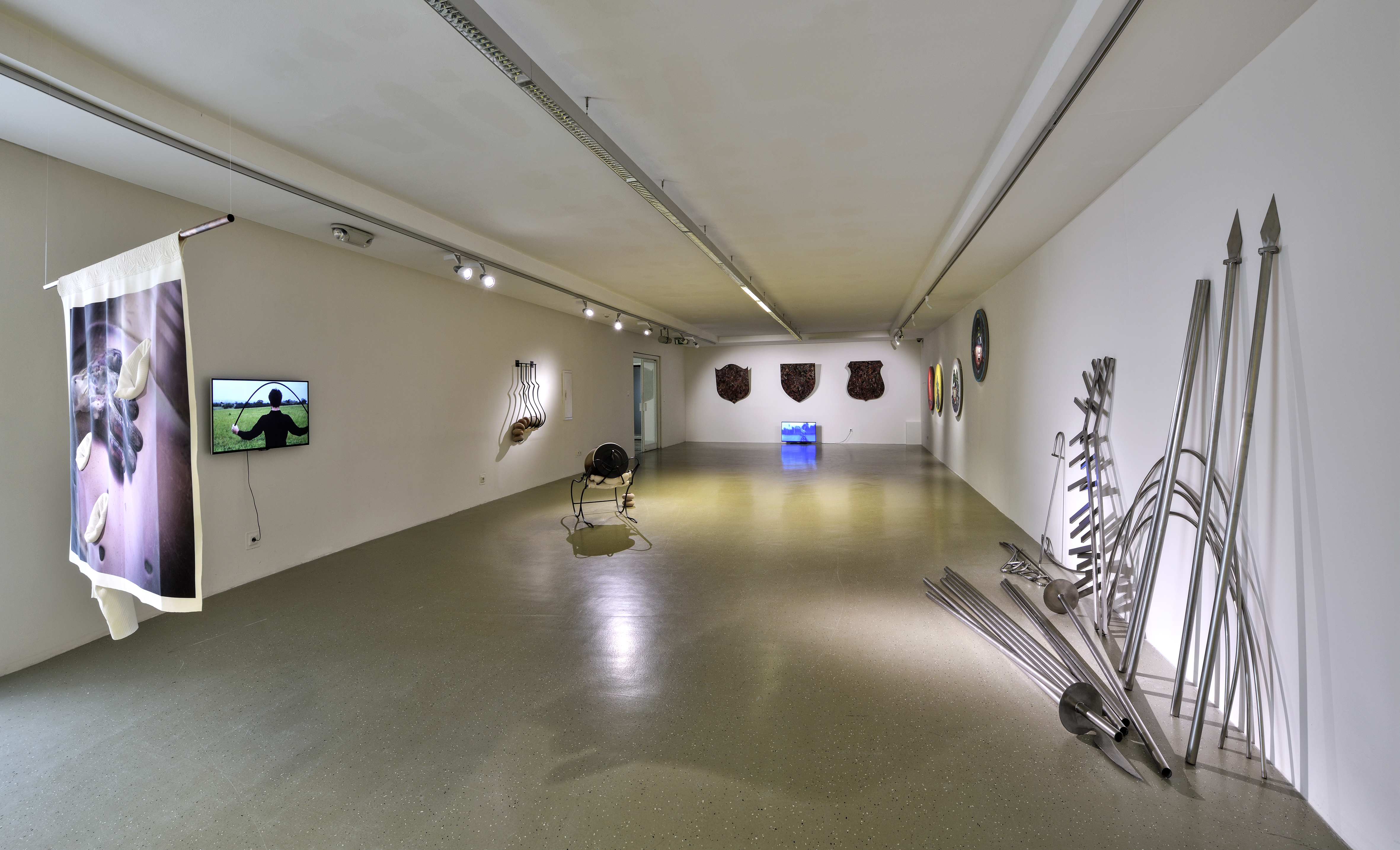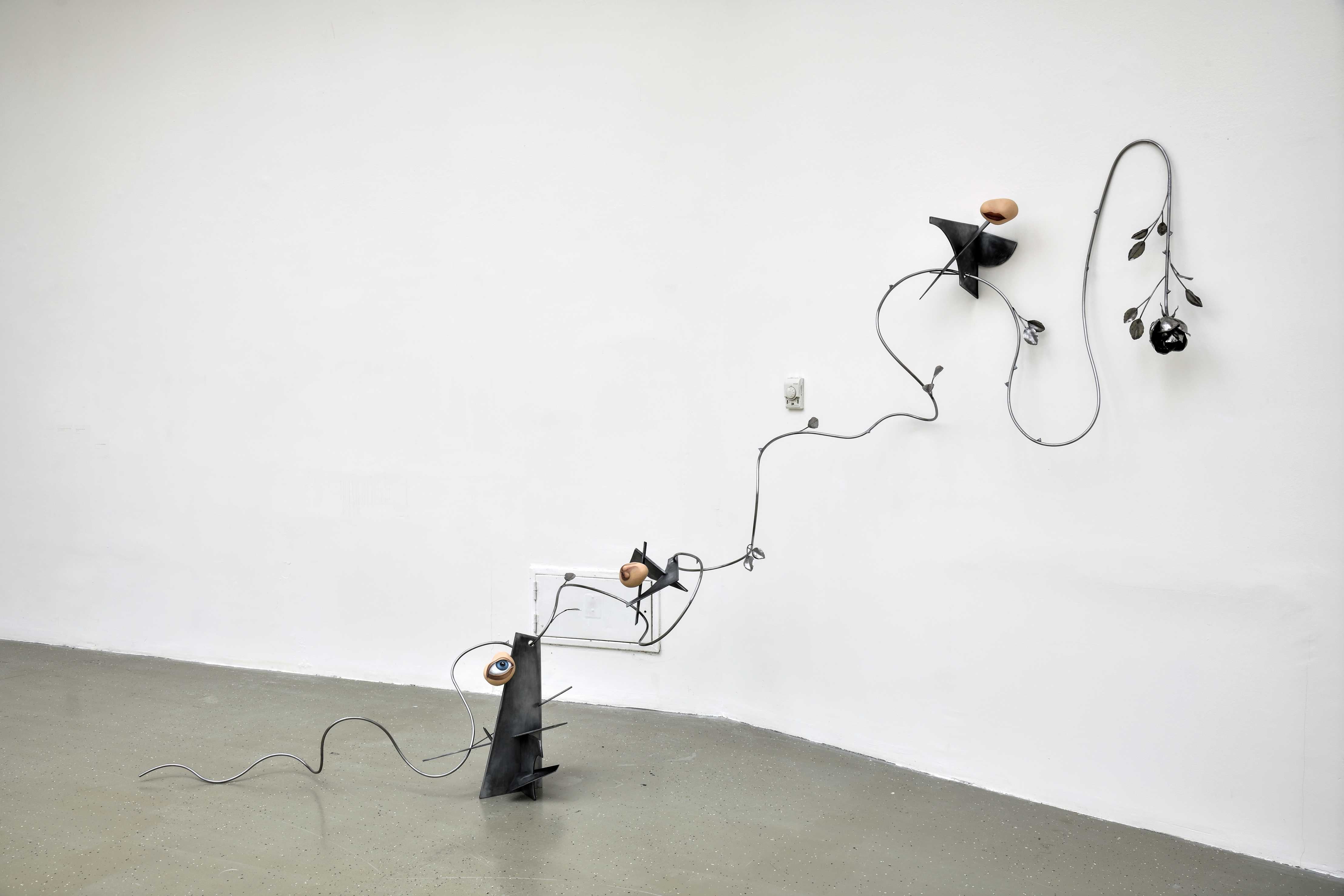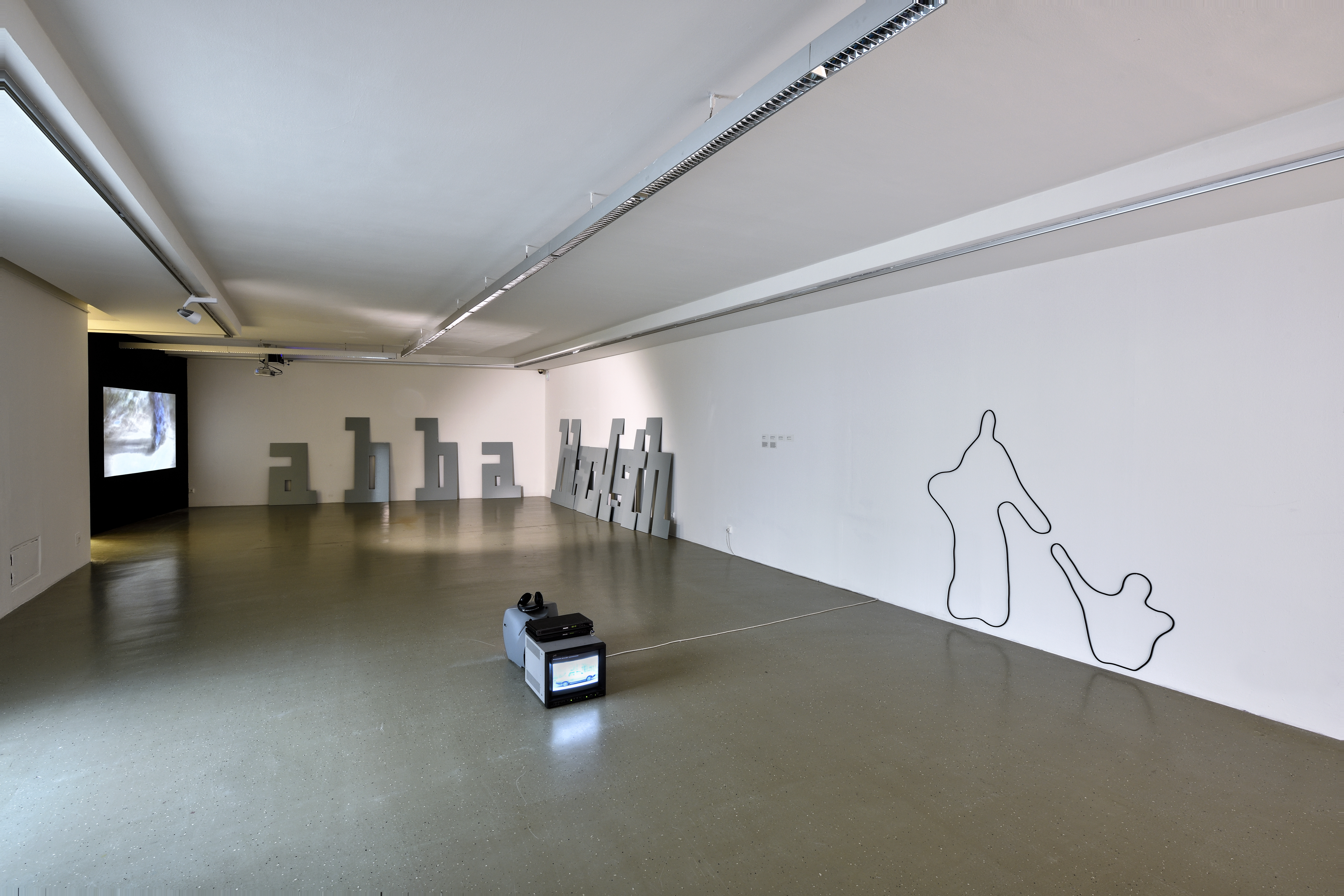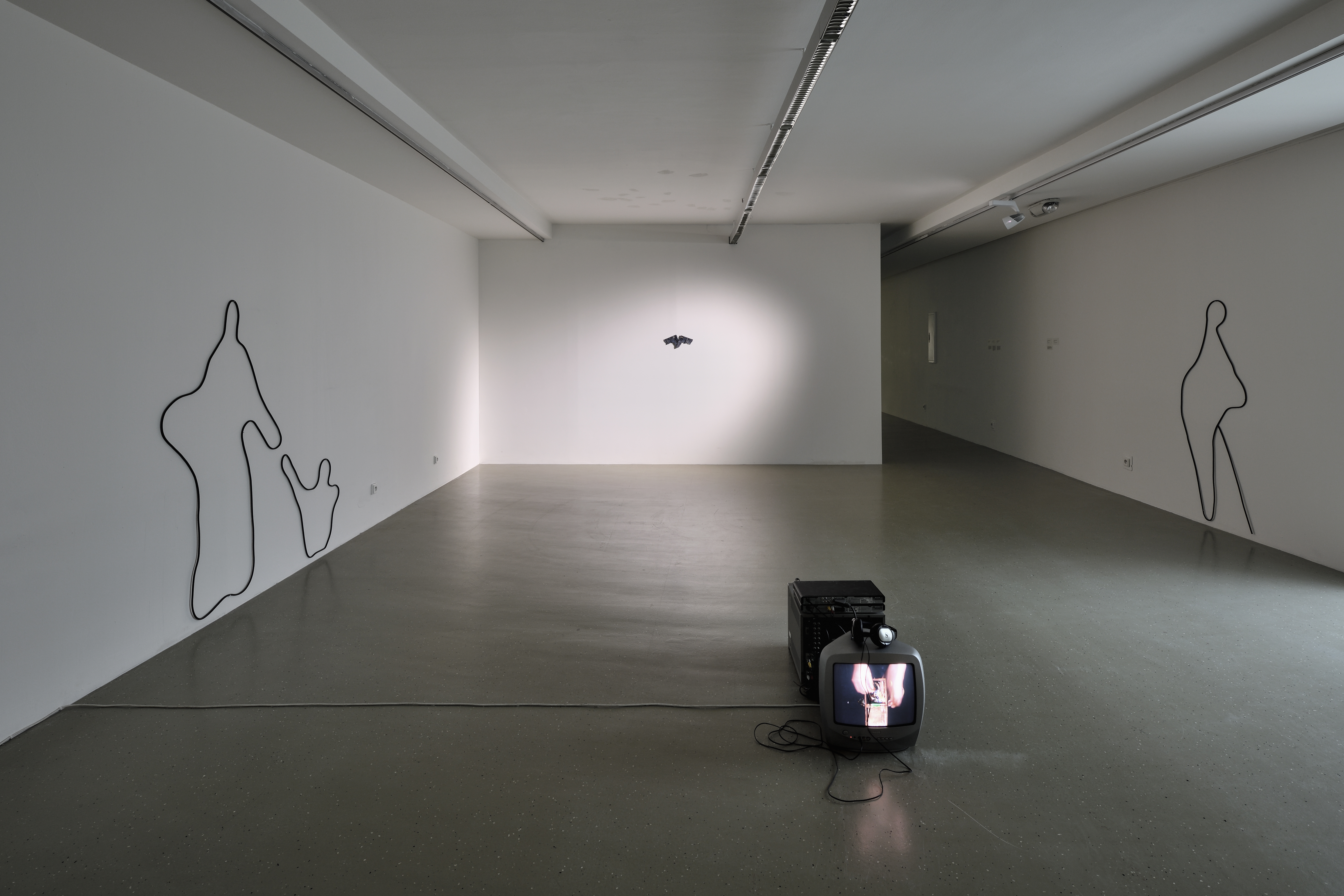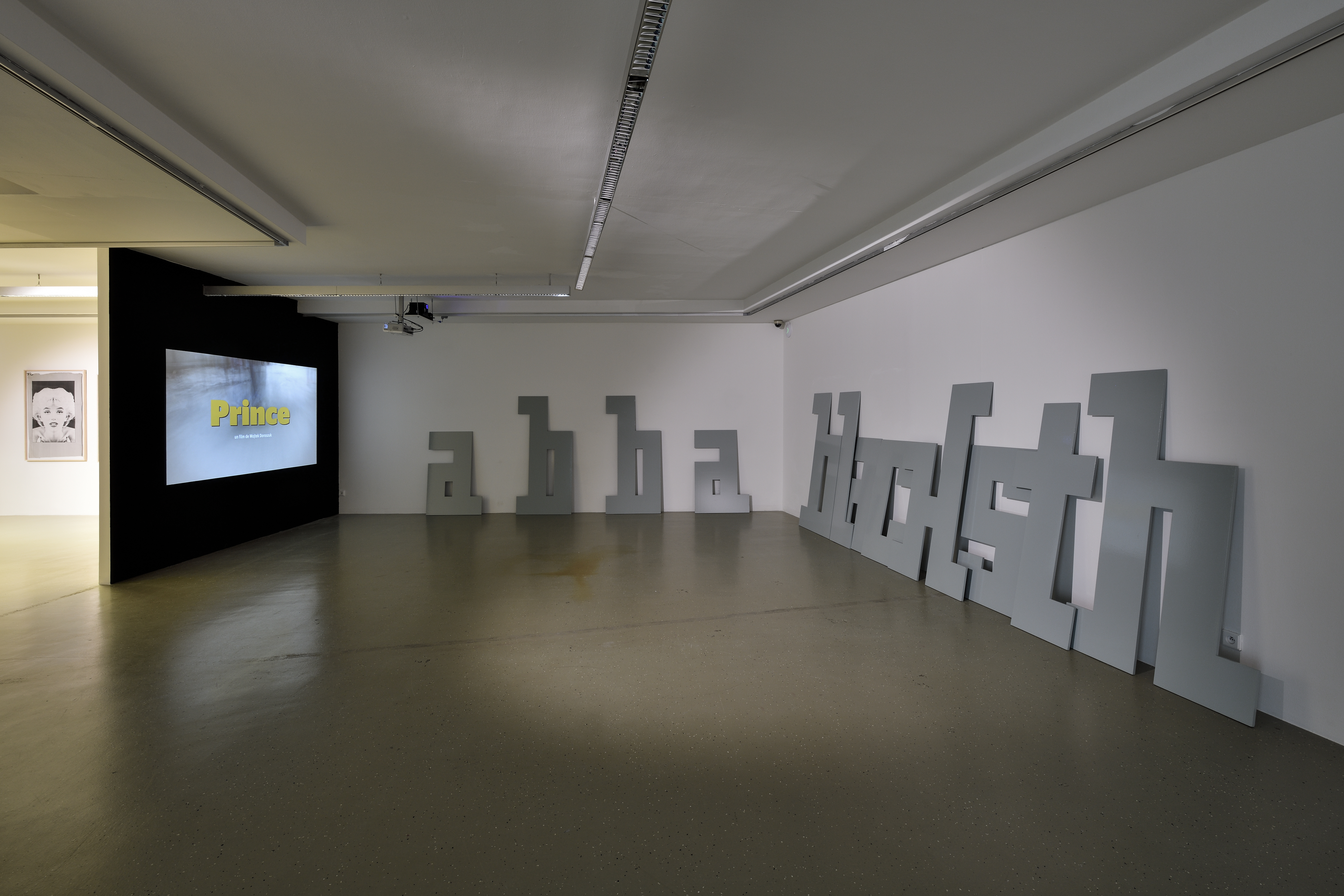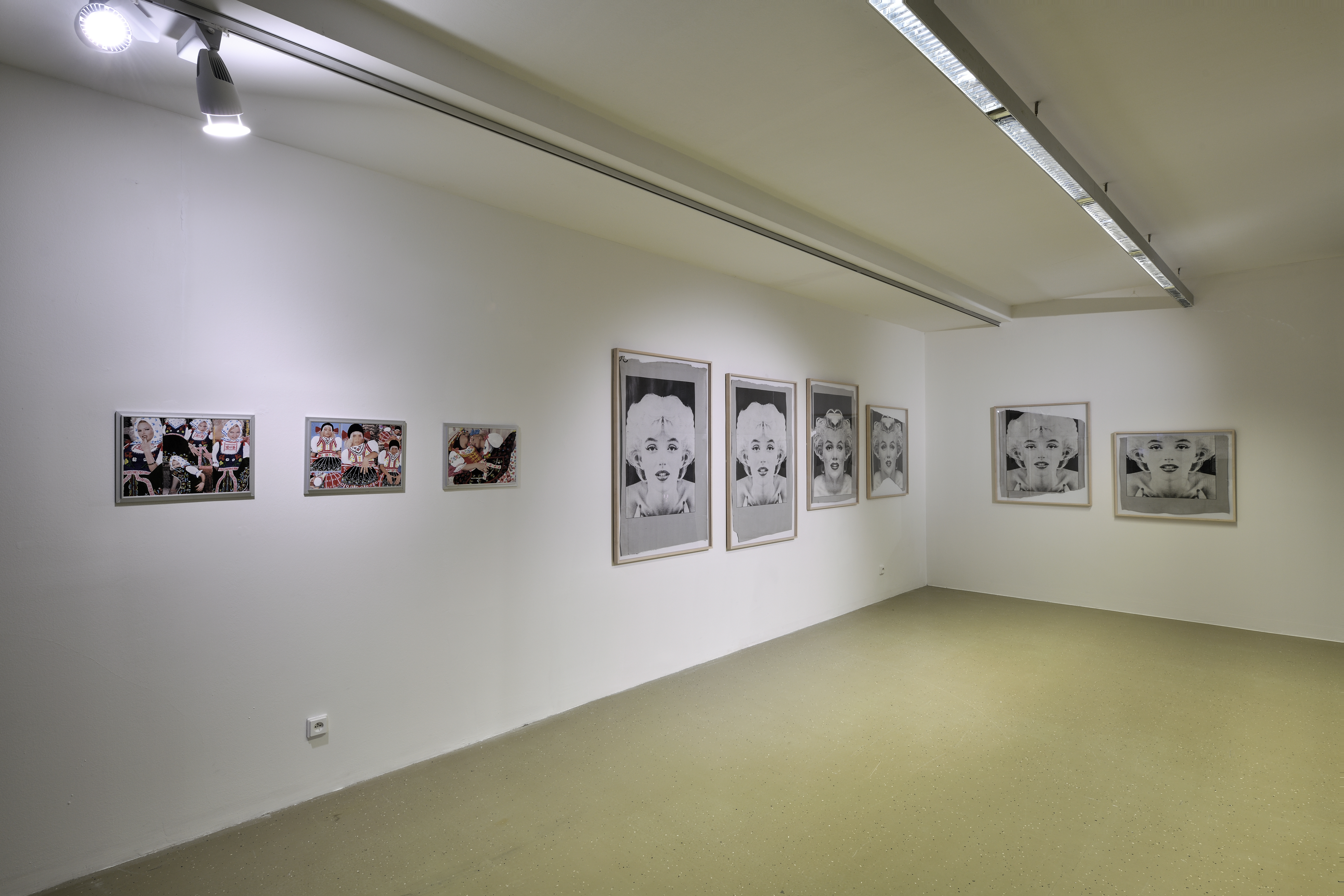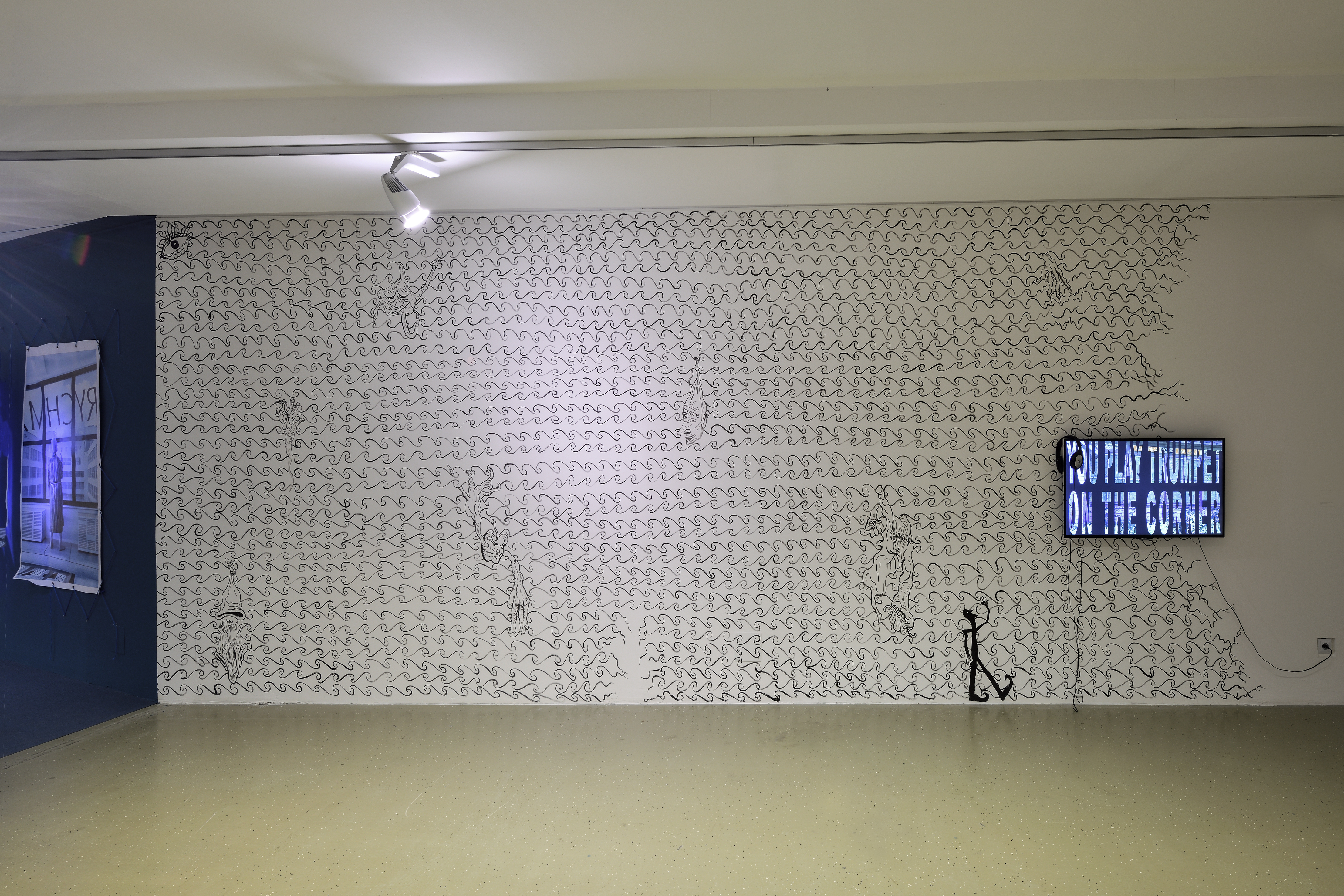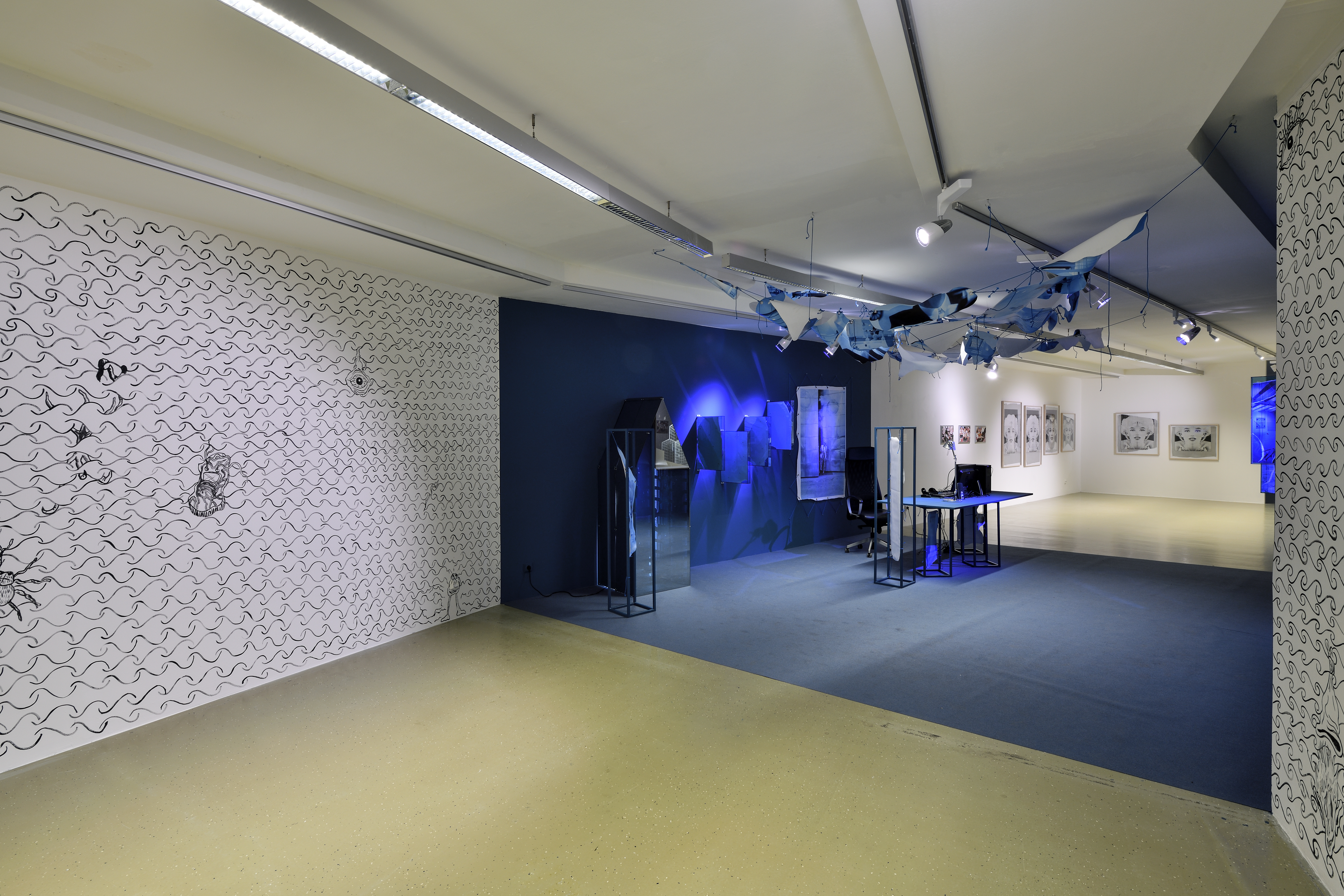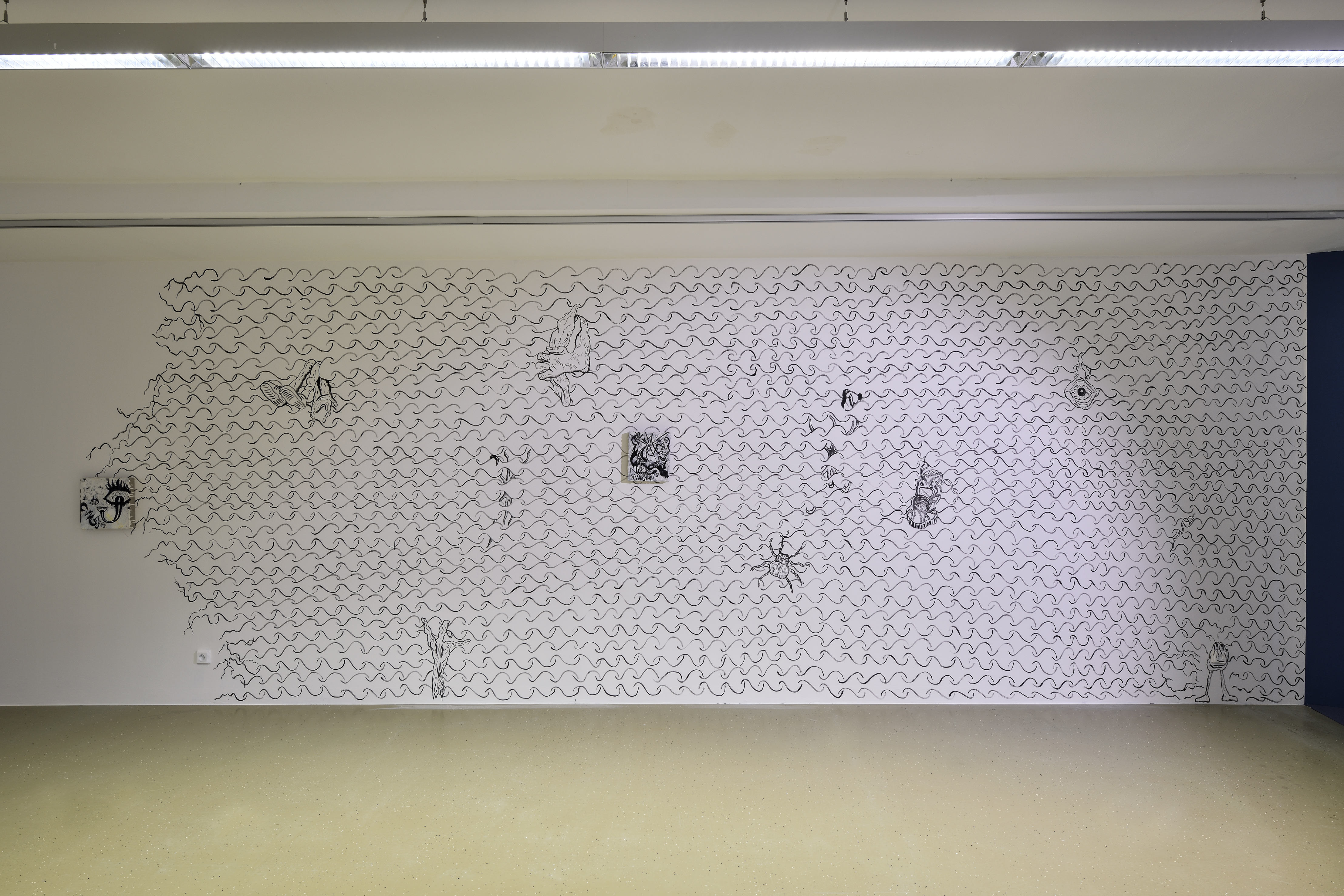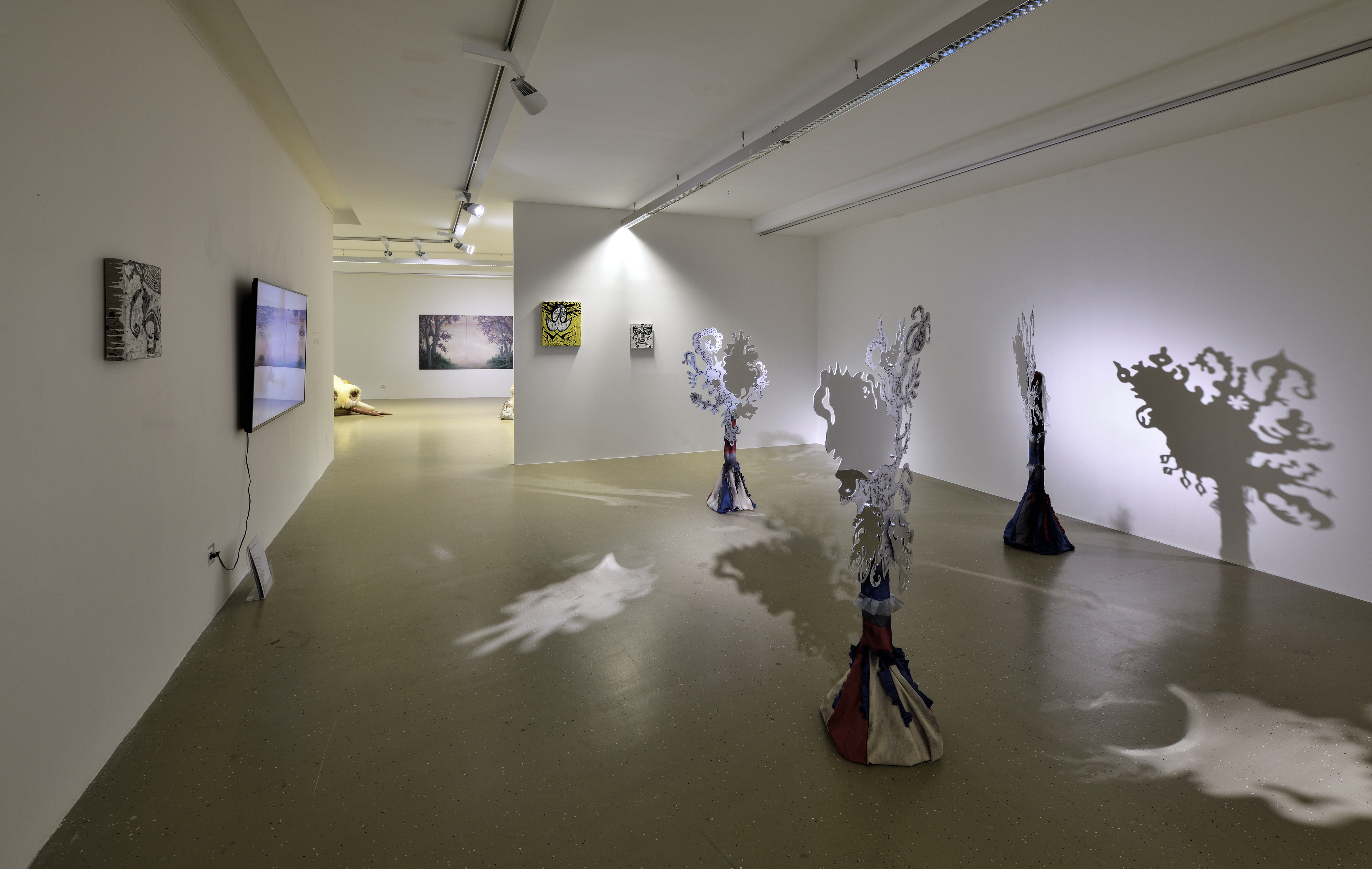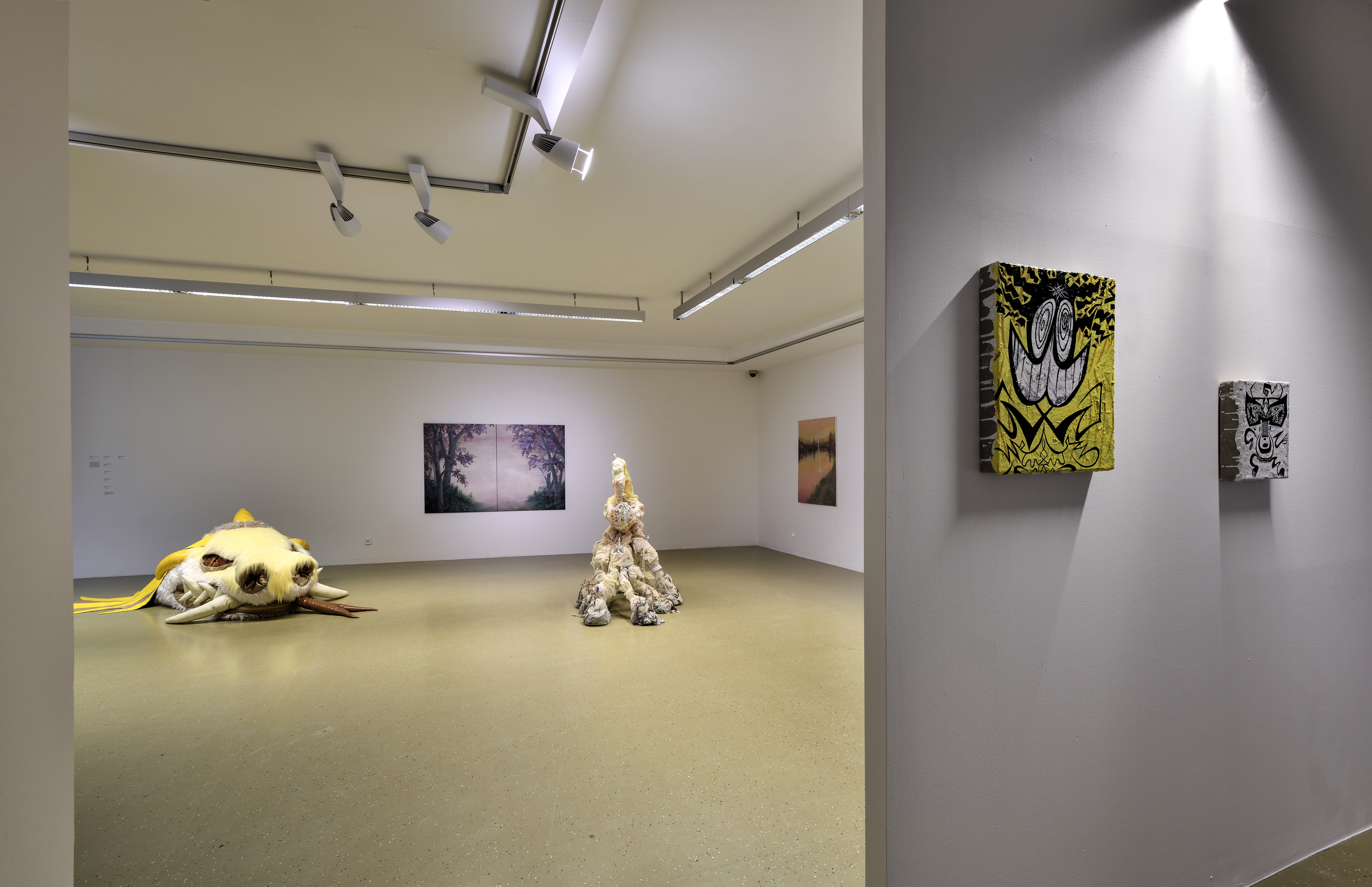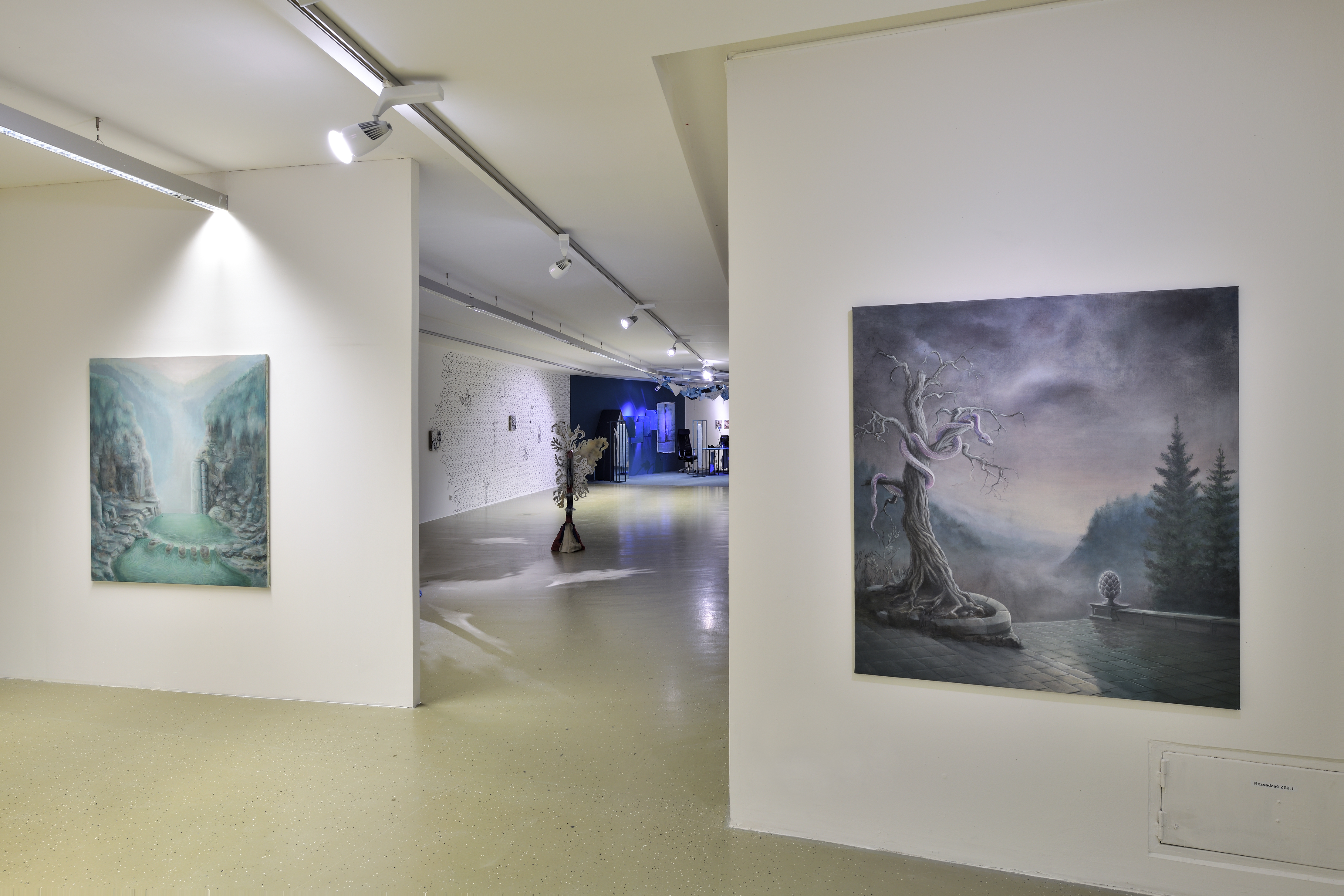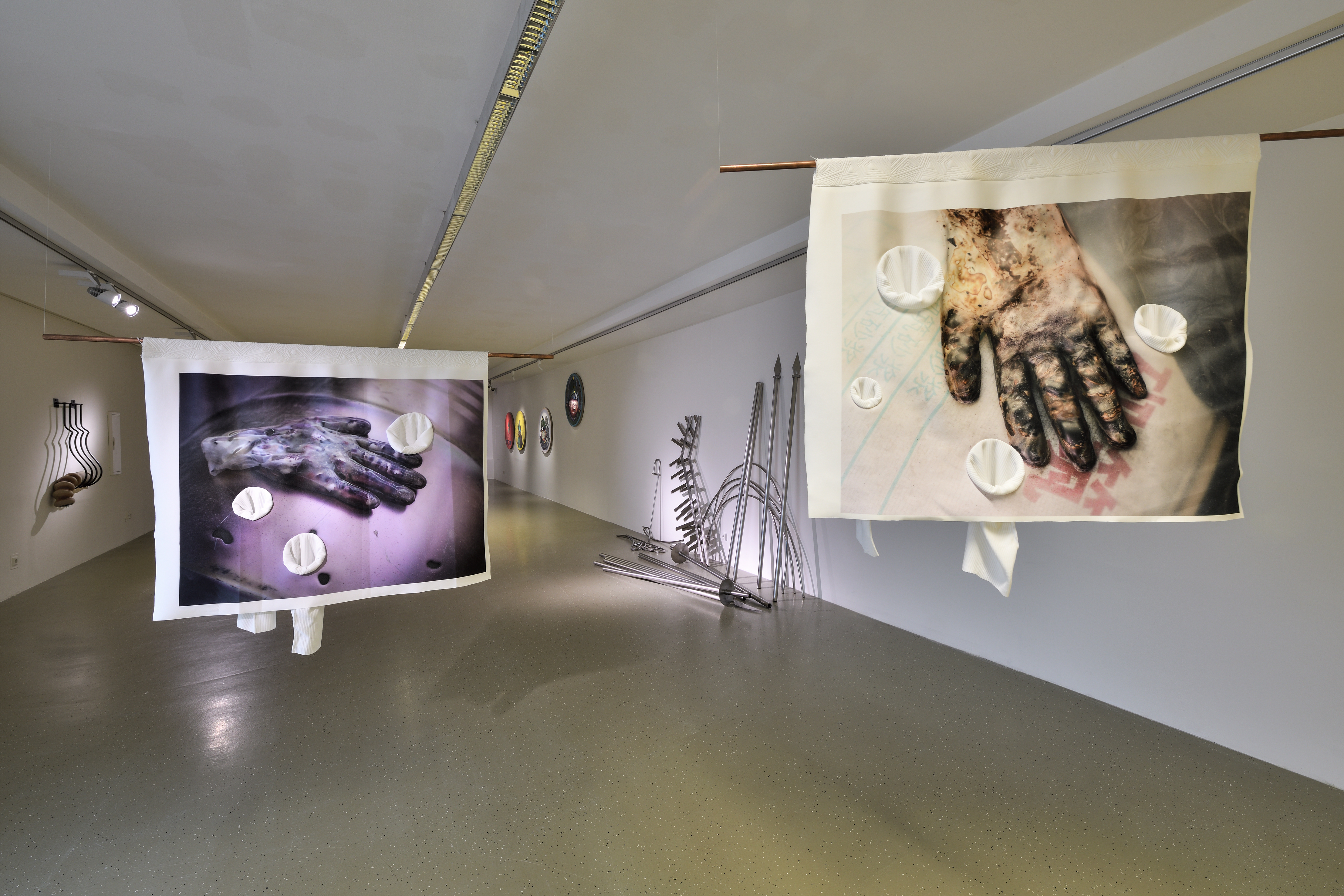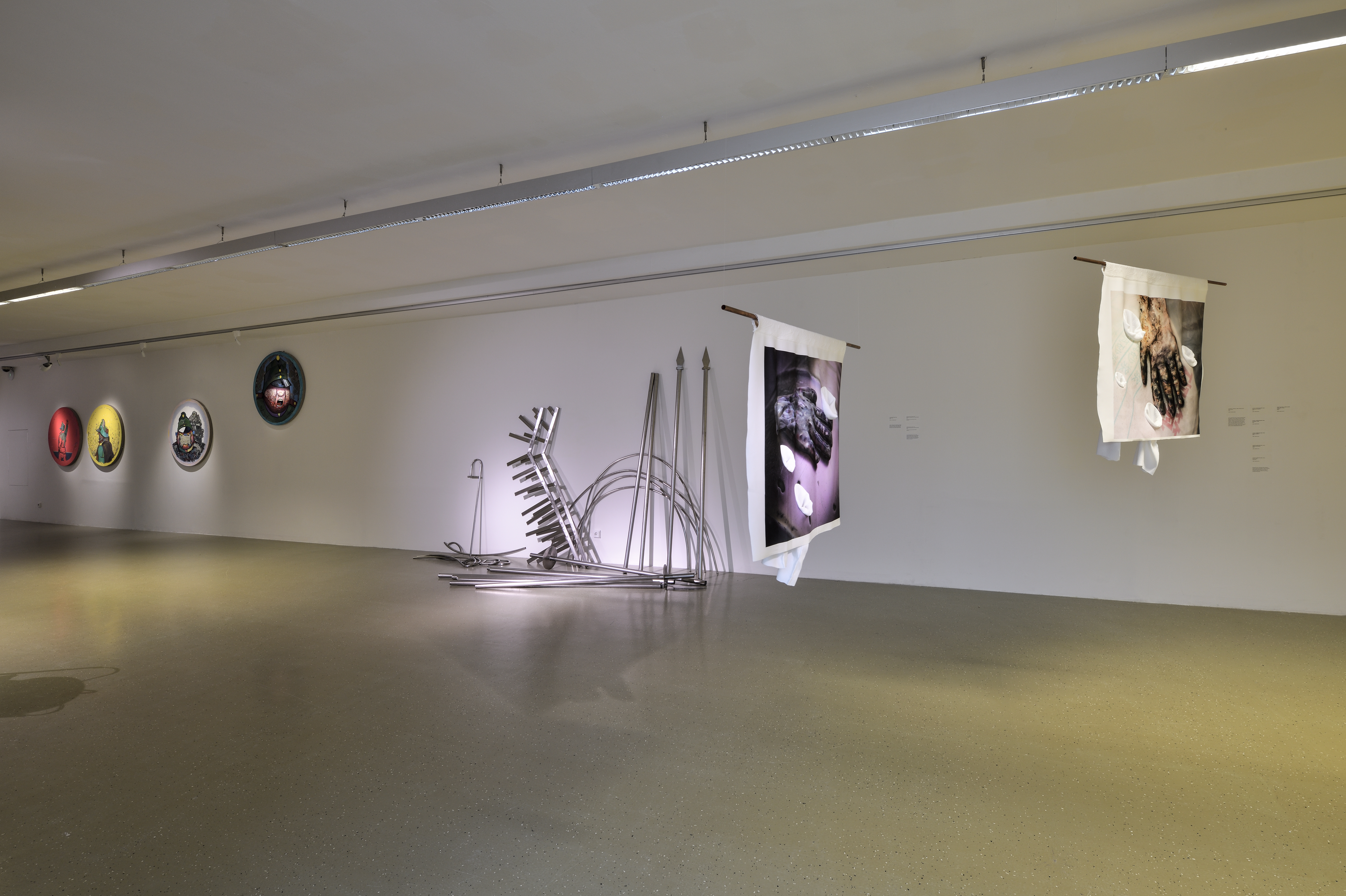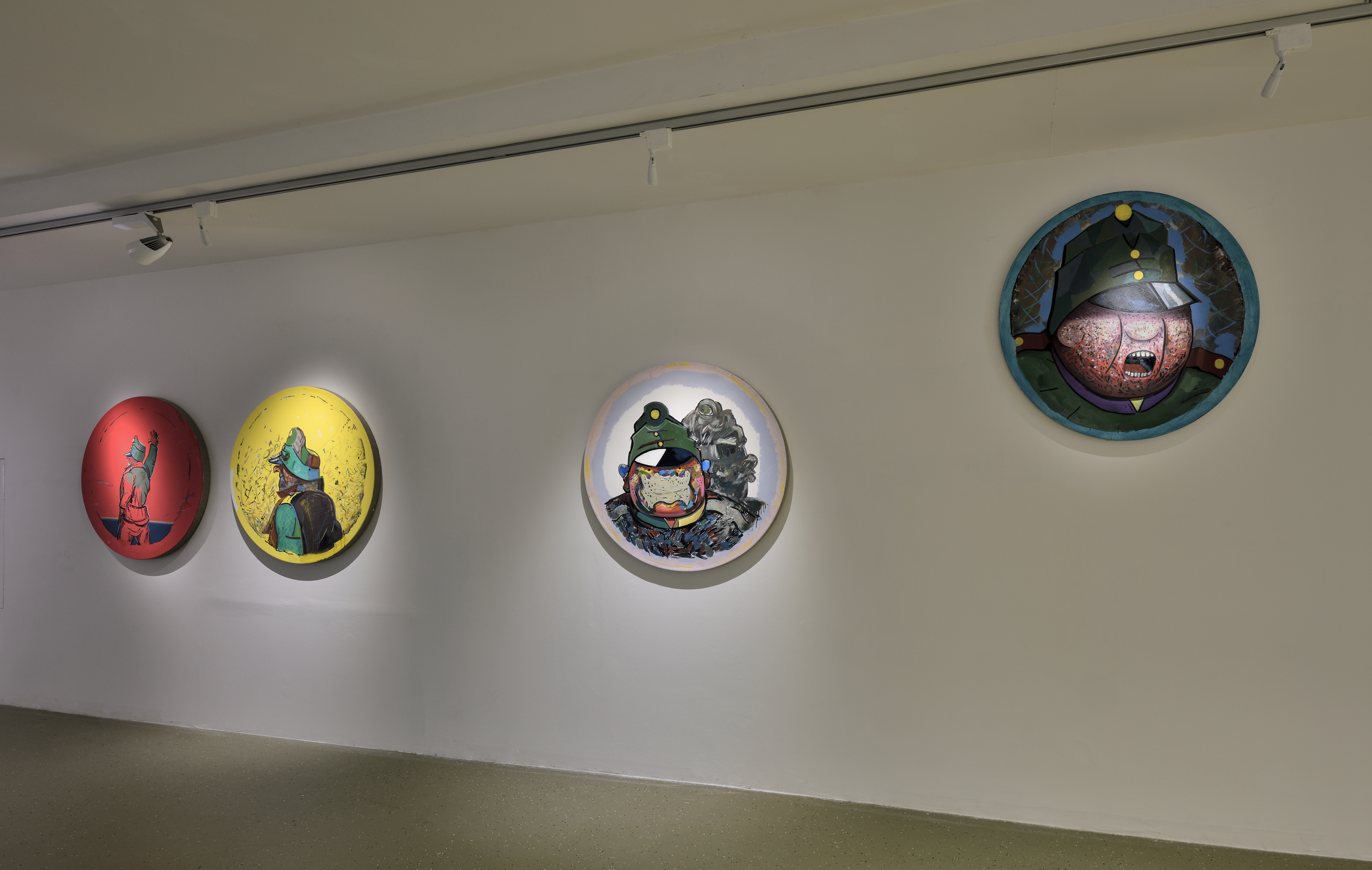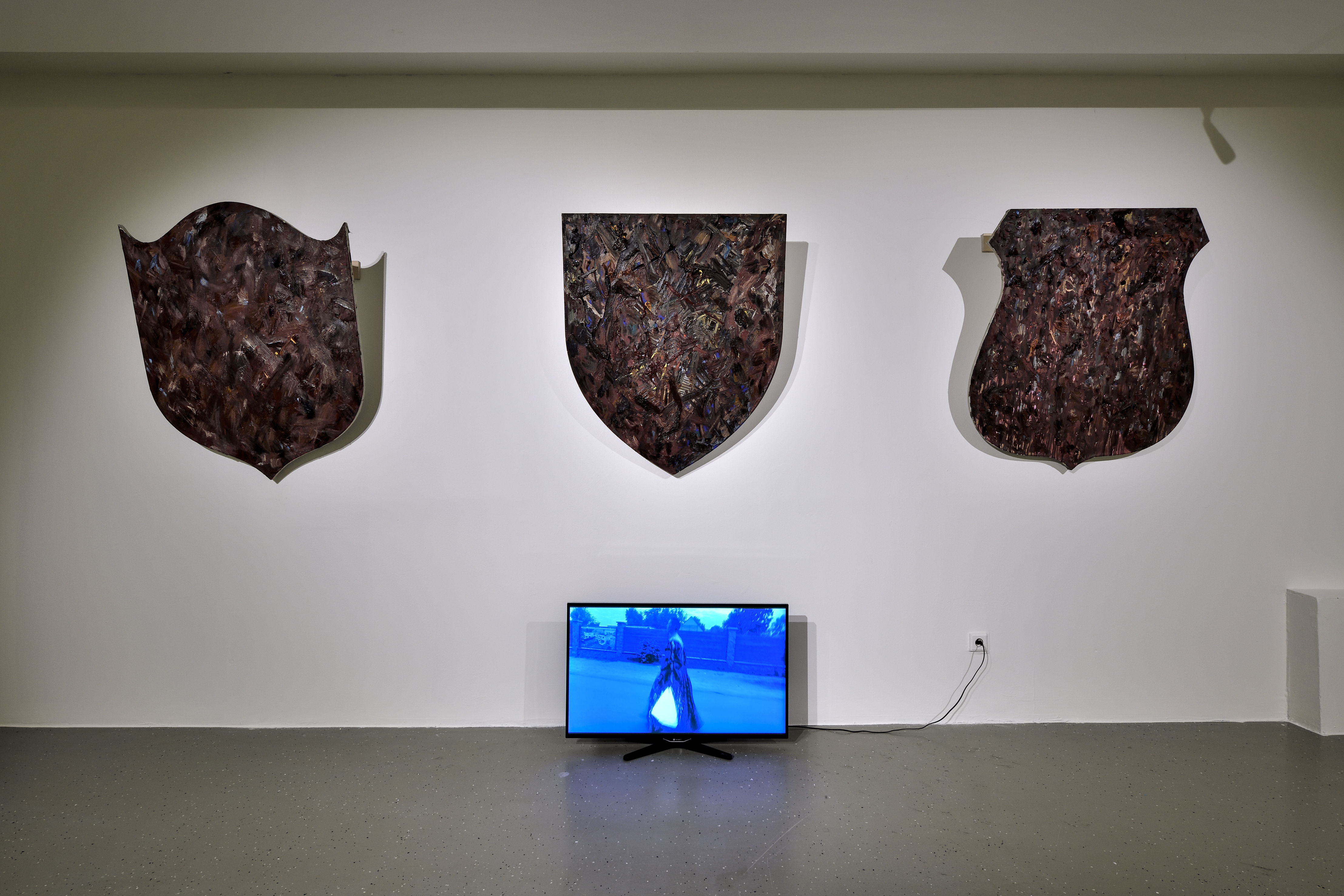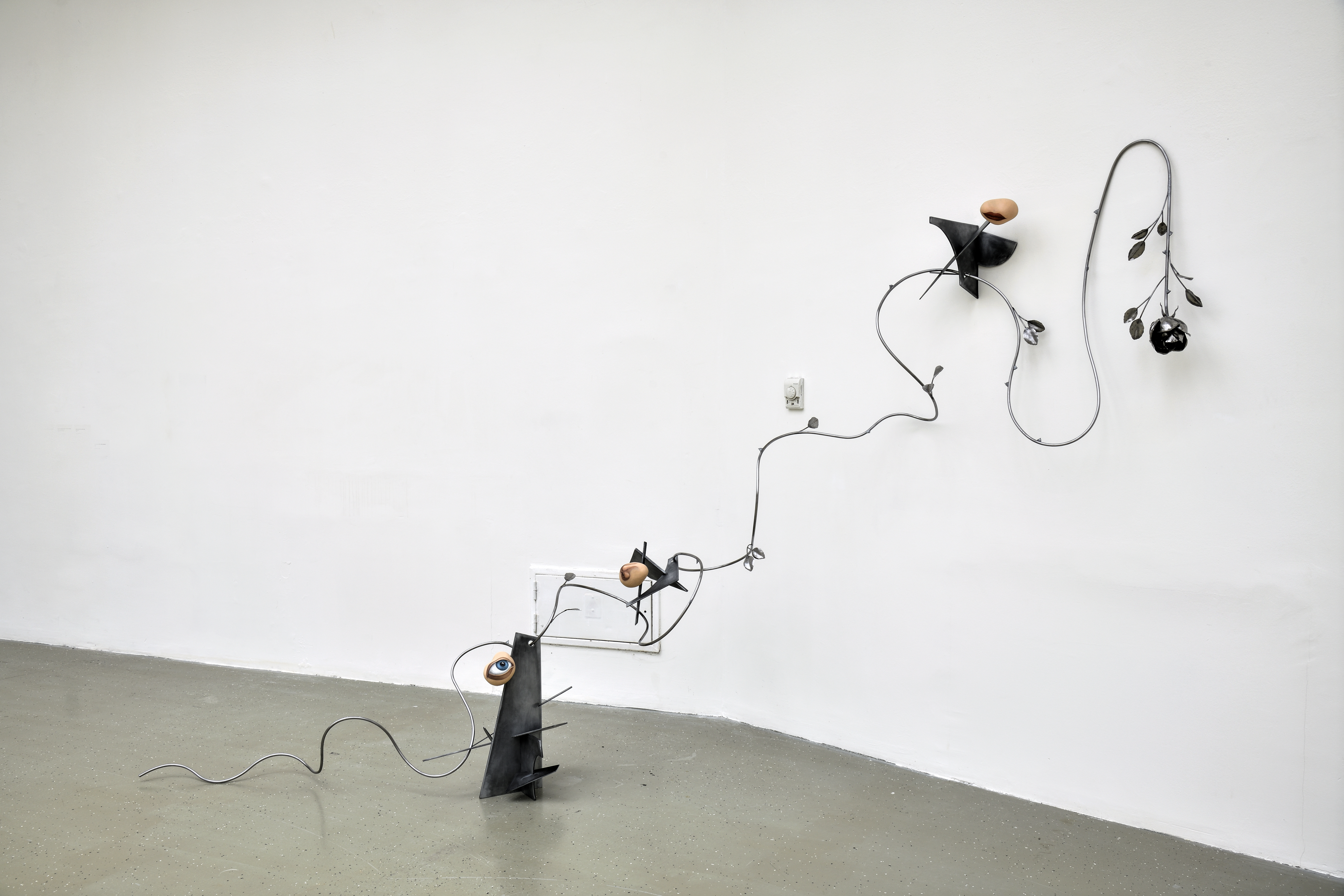Artists: Argišt Alaverdyan, Rada Boukova, Zuzanna Czebatul, Marek Delong & Anna Slama, Anna Daučíková, Wojtek Doroszuk, Anders Grønlien, Kaspars Grošhevs, Martin Horák, Baptiste Charneux, Šimon Kadlčák, Shifra Kazhdan, Alina Kleytman, Lenka Klodová, Ádám Kokesch, Martin Kohout, Ieva Kraule, Marlena Kudlicka, KwieKulik, Marek Meduna, Daria Melnikova, Vlad Nancă, Deimantas Narkevičius, Richard Nikl, Jan Pfeiffer, Jaakko Pallasvuo & Anni Puolakka, Lucia Elena Průša, Jan Šerých, Jiří Thýn, Ondřej Vicena
Title: Orient 2
Curator: Michal Novotný
Venue: Kunsthalle Bratislava
Photos: Martin Marenčin
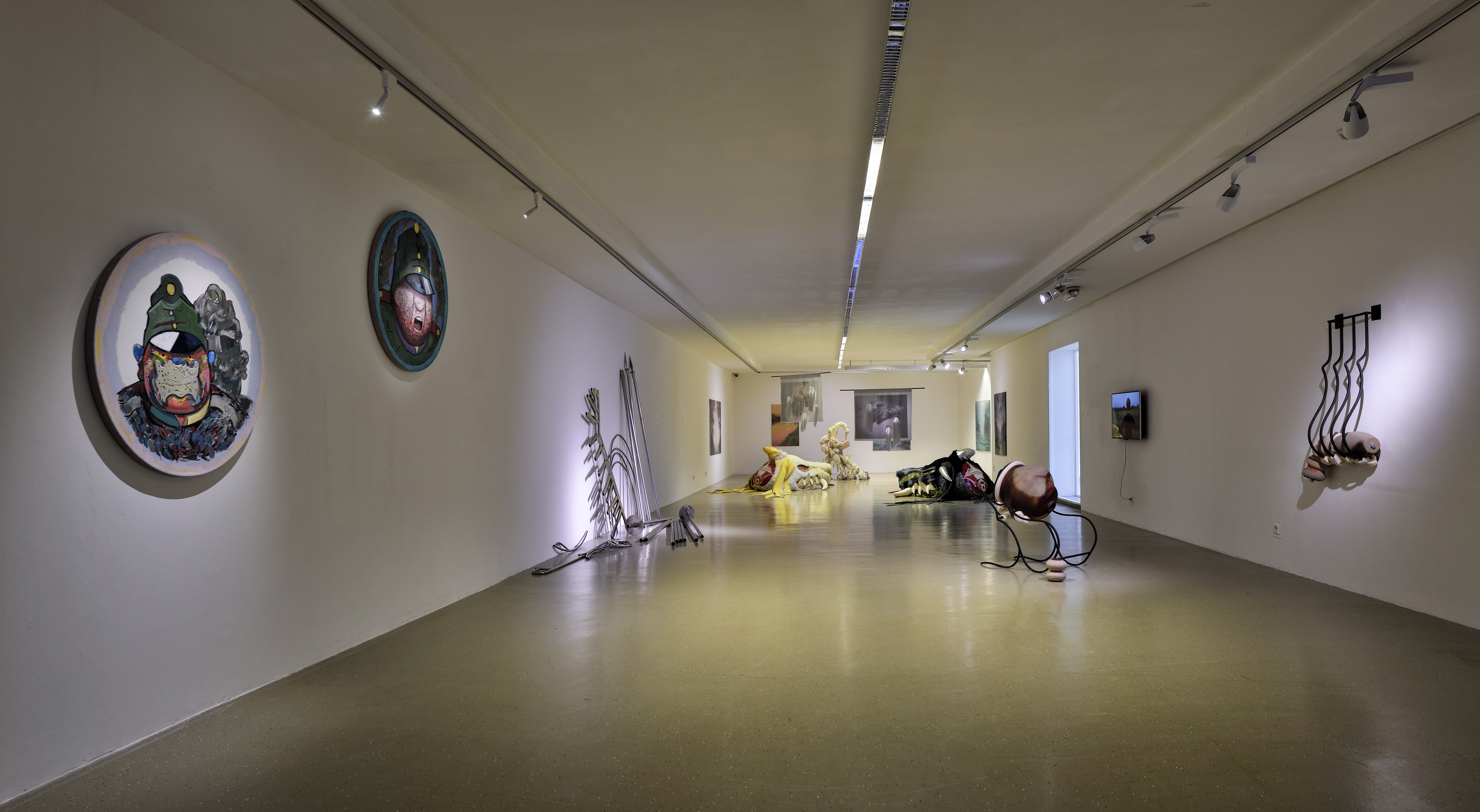
Is There an East European Identity?
Kunsthalle Bratislava is opening an international exhibition entitled Orient2, curated by Michal Novotný, director of the Collection of Modern and Contemporary Art at the National Gallery in Prague. Orient2 is a collective exhibition, a more extensive continuation of the Orient project, made to measure for the first-floor spaces of Kunsthalle Bratislava. Elsewhere in Europe visitors were able to see it in several cultural centres during 2018, e.g. in Kim? Contemporary Art Centre in Riga, BOZAR Centre for Fine Arts in Brussels and Bunkier Sztuki Gallery in Krakow.
Orient2 is a meditation on the existence of an East European identity. Novotný finds the unifying aspect of this indefinite region in its contradictory and yet mutually complementary feelings of low self-esteem and arrogance, as the two defining registers of its wounded identity. Here he points to a suppressed inferiority complex, which may be a reason for the current growth of nationalism and undemocratic tendencies in Eastern Europe. The exhibition thus poses a question, whether the fact that the region has failed to create and assert an East European identity cannot be changed into a positive success.
The name of the exhibition evokes Edward Said’s Orientalism and thus emphasises the existence of Eastern Europe as a series of projections, connected with an insufficiency of information and the ignorance of individuals and institutions. Orient2 is at the same time a chronology of unsuccessful liberation and of the history of illusory feelings after the 1980s, that freedom had come at last.
The project also draws attention to the infrastructure and accumulation of capital. It takes a materialistic standpoint towards the proclaimed autonomy of art. The context is dependent on what we regard as good or bad art, and it is possible to buy it. An insufficiency of infrastructure is regarded as insufficiency of quality, and capital is at the same time the language of international art.
On the formal side the exhibition takes the viewer through five genre scenes (Waiting Room, Everyone’s All Dressed Up and Nowhere to Go, Carpathian Digital Meadows, The Devil in the Machine, Shadows of Past Futures) of inglorious history, along the tracks of the historical dialectics of the region’s development over the past thirty years. On this journey visitors have an opportunity to acquaint themselves with over thirty two artists from over ten European countries. The genre enables the curator to be serious and ironic at the same time. And that is something very East European.
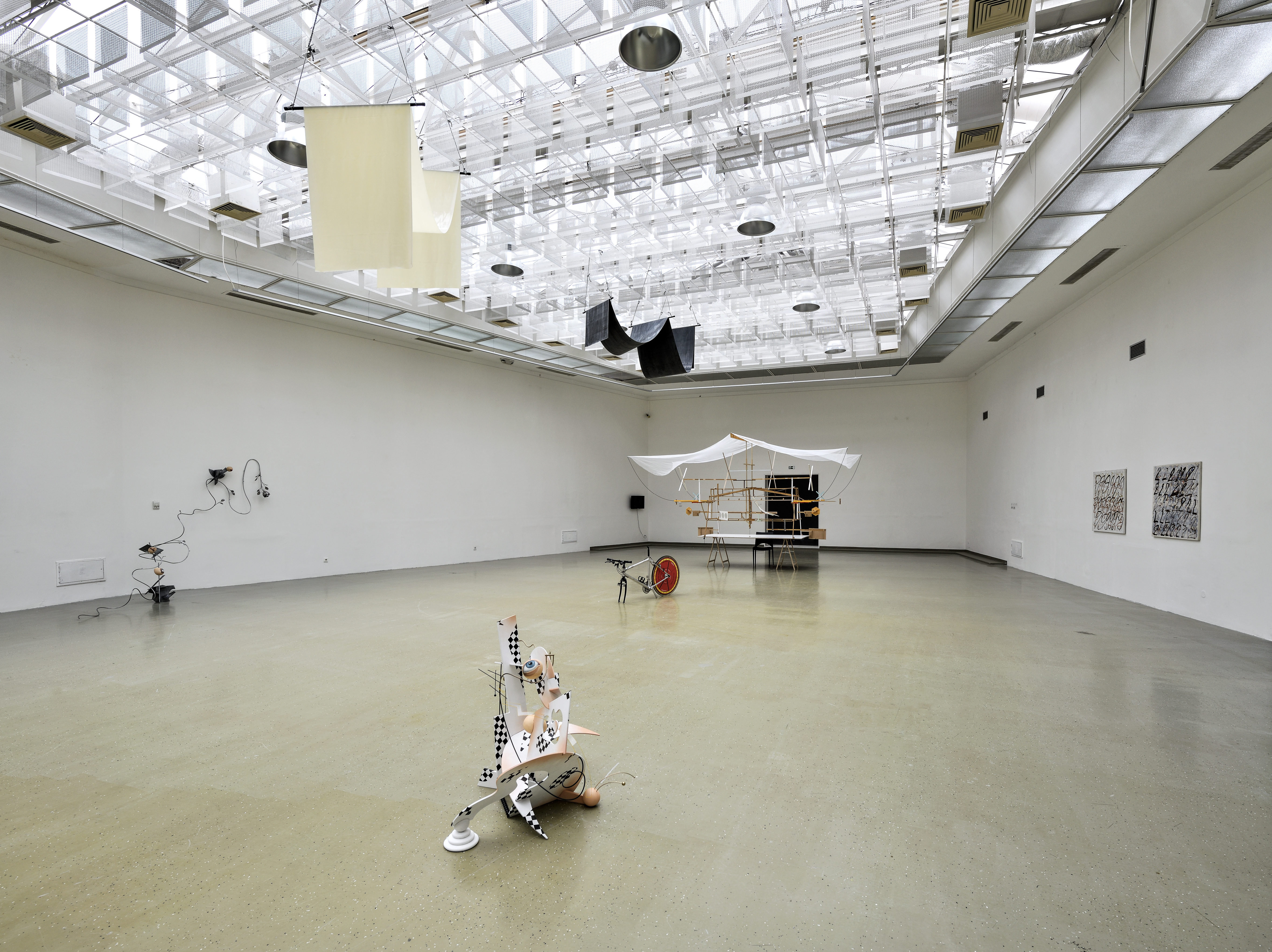
Michal Novotný is director of the Collection of Modern and Contemporary Art in the National Gallery in Prague. During the years 2011-18 he led the Futura Centre for Contemporary Art in Prague; from 2016 to 2018 he was external curator in the Plato Gallery in Ostrava. He teaches at the Academy of Arts, Architecture and Design in Prague, where he has been Assistant Professor since 2016. Currently he is one of the most highly regarded curators of the younger generation in the European scene.
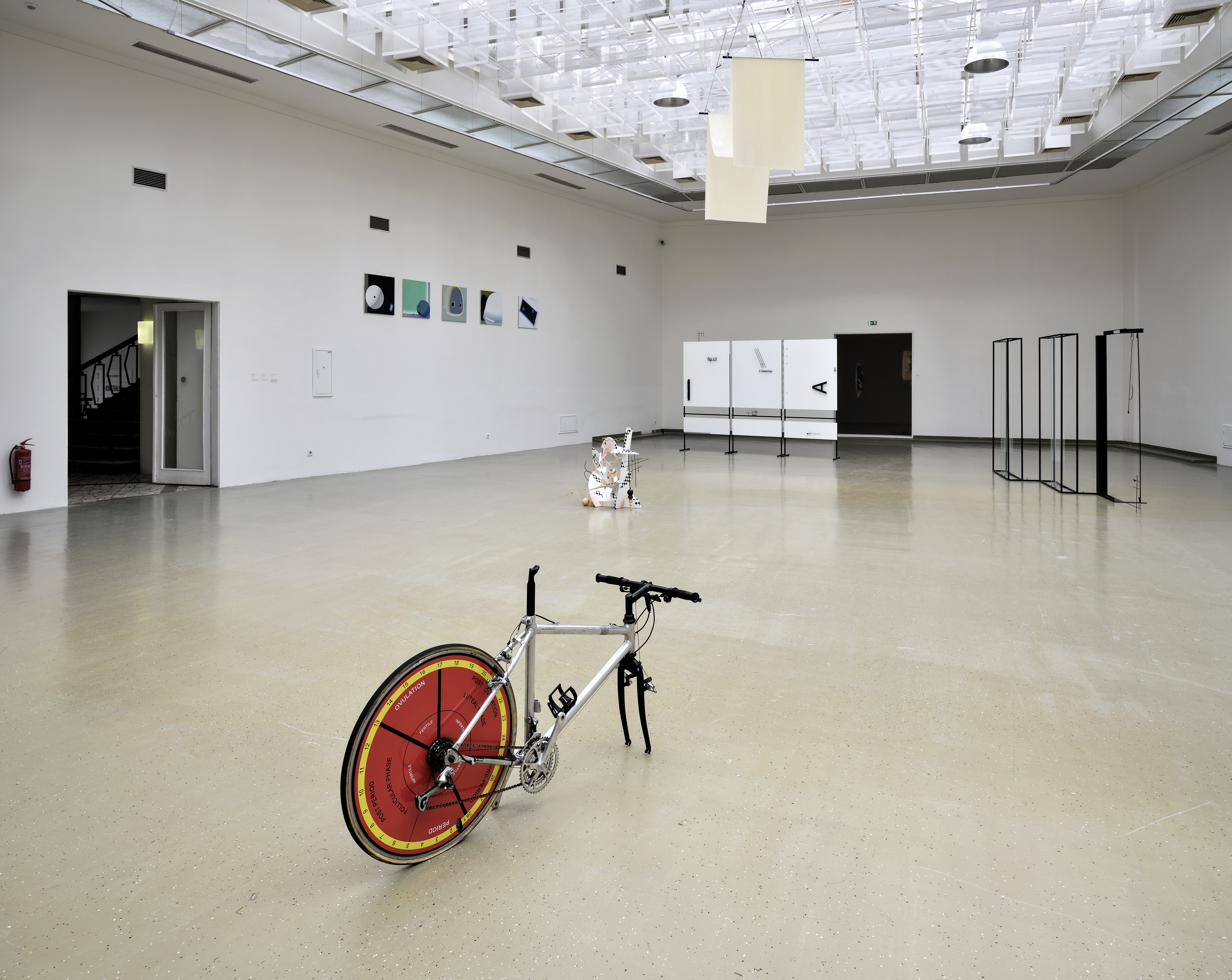
Genre Scene 1: Waiting Room
“My context is a country that was built on a social and political Utopia. But I grew up in the period when nobody really believed in it. The fall of the Soviet Union was at a time when people had other Utopias. These were liberal Utopias, about freedom to do what you do. These kinds of Utopia were also an illusion, and lasted only for a few years. People grew disillusioned very quickly. What kind of Utopias can be created on a human scale? That is the question and I don’t have an answer.”
- Deimantas Narkevicius: Against monumentality by Hans Ulrich Obrist, Flash Art, July – August – September 2008
Genre scene 2: All dressed up and nowhere to go
“In my cabaret there were no eight years old girls. But girls of age, girls long legged, girls – imitations of angels. Instead of wings, they spread their long legs, which was as beautiful, as if it were angel wings. Guests liked it more than any show of an illusionist, and their faces followed the open genitals with fascination, like the praying bodies of Muslims follows Mecca. To make the show more interesting, girls were making different special effects. One for example put in her vagina a blinking plastic ring with diode. When after, she got naked, spread her legs, all her c**t was lighten through visibly. And the ring was not at all visible. Then once she started to pee, it looked like the famous light fountain in Fučíkárna. (…) Another speciality were the glass eyes, used for the mutilated bodies from car crashes. The amazed “ooh” of the Germans floated in the bar, when a girl spread her legs and there was a “magic eye” looking on the amazed guests! It even winked when she alternately closed and open her legs. It was unbelievable illusion of a living eye, right in the anus. You must admit, that real angels, even with their wings, would never be able to reach that effect!”
– Ivan Jonák, from the 700 pages unpublished memoir.
“Ivan Jonák, a Czech businessman, owner of legendary club Discoland Silvia, that he once infamously promoted, riding in white day’s Prague’s city centre in open car himself naked with naked female models, who served 18 years in prison for ordering the killing of his wife in the 1990s, and who was himself subject of two failed murder attempts, has died at the age of 59, on the 666th day after his release from prison.”
- Radio Prague, 24/2/2016
Genre scene 3: Carpathian Digital Meadows
“Our emotional state of choice is Ecstasy. Our nourishment of choice is Love. Our addiction of choice is technology. Our religion of choice is music.
Our currency of choice is knowledge. Our politics of choice is none. Our society of choice is utopian though we know it will never be.
You may hate us. You may dismiss us. You may misunderstand us. You may be unaware of our existence. We can only hope you do not care to judge us, because we would never judge you. We are not criminals. We are not disillusioned. We are not drug addicts. We are not naive children. We are one massive, global, tribal village that transcends man-made law, physical geography, and time itself. We are The Massive. One Massive.”
– fragment from Shockraver Manifesto
“Main field: Circus Alien, Kernel Panik, Mikro, Direct Drive, Deport, Frontall, Hypno, Morphonic, Harampade, Space patrol, Otok – Tone – Trois Points, Spectro + Virus + P.E., Saltimbank + K.G.R., R.T.G., Gardenzitty, Aphrikka, System Defekt, Tribal Vision, Layka, Full Circle, Mimic, Prior, Fatal Noise, Esc. Komatsu, Pentatomica, Tsunami, Anal Commandos, Team Trash, Kaztrol, Letek, Vosa + Emmadoom, Distix + Singular, Bass Beast D.B.S., Machine WRKS AKA, Restless Natives, Strahov, Oktekk, M2R, Shamanic, Psykomatik TPR, Ufopunkers, MayapuR, Zuqwa,
Second Field: Virvál, Magion, Master kru, Rotor, Trinidad, Hedonix + Pan:dan, Spofa, Laydakk, Recycle, Basswoos, Rekrea, Zmastek, MassaCrew, Czahovna Soundsys, Funda-Mental, IGRA 1.5V, Locus, Antares, Bione, Illegal Soundsys, Kwan, Pitel, CML, Third Hand, Mozaika, Radio 23, Cable, Haccor
NSK Field: NSK, Metek, Cabaret, Luxor, Ubik, Qwadrant soundsystem, stupid sounds
Deset Storm Field: Trakkass + Oxyde + Metro, Deset Storm + Toltek + New Sense, Hekate + Reset + Headfuk, pH:4, Enzo, D.P.”
– participating sound systems map of free tekno festival Czechtek 2004
Genre scene 4: The Devil in the Machine
“The horrific new trend was set on February 19 by a 26-year-old jobless man, who poured a flammable liquid on his half naked body and set himself on fire in front of the local branch of a major bank to the utter horror of a few passers-by.
(…)
Less than 24 hours later Bulgaria was jolted even more, when a 36-year-old artist, climber and environmentalist, set himself on fire in the center of Bulgaria’s sea capital Varna, scene of the biggest rallies of anti-government protesters in recent months.
(…)
While struggling with severe burns that had left healthy skin only on his feet the young man became known as Bulgaria’s Jan Palach, the Prague student, whose death in flames sparked the hope of a whole nation back in 1969.”
– Milena Hristova: Bulgarian Burning Bushes, novinite.com March 27th, 2013
“Andrzej Filipiak came to Warsaw from Kielce on Tuesday night. At Around 11PM he sat on the bench in front of prime ministers office and set himself on fire. He did not have any banners, he did not shout. (…) A 56-year old man could not find a job and did not receive help from the state. “He asked me 30 zł for a ticket. He just said he was going to Warsaw. He shaved and left the house,” says his wife.”
– wpolityce.pl, June 13th 2013
“Lydia Petrova, the 38 years old photographer, who set herself on fire before the building of the Presidency in Sofia last week has passed away. Despite the efforts of doctors from Pirogov emergency hospital the woman expired last night. She had extremely heavy burns and from the very beginning medics warned her state is incompatible with life. Let us remind that Lydia Petrova set herself on fire on November 3 as a sign of despair before the eyes of dozens of journalists and pedestrians around the Presidency.”
– BNR, radio Bulgaria, November 10th 2014
“Piotr Szczesny, a 54-year-old father of two, set himself on fire in front of the Communist-era Palace of Culture in Warsaw. Mr. Szczesny’s outcry was aimed against the far-right policies of the ruling Law and Justice Party, which he believed represented a mortal danger to Poland’s democracy. In a leaflet that he seems to have distributed before his suicide, he was unflinching: “I love freedom first and that is why I decided to immolate myself, and I hope that my death will shake the consciences of many people.”
- Ivan Krastev, New York Times, December 2rd, 2017
Genre scene 5: Shadows of the Past Futures
“Art of Eastern Europe, if there was one and if it was to be written about by an Anglophone art historian, had to be presented according to the rules of quite another discourse, as convincingly autonomous, immunised, so to speak, against the dominant sociopolitical clichés about rape, backwardness, imitativeness, and “clean tractors”. Not surprisingly, a tentative and Cold War-underpined Western research on art in Eastern Europe focused almost exclusively on modernism behind the Iron Curtain, following the patterns of the earlier rediscovery of the persecuted Russian and Soviet avant-garde.”
- Welcome to Slaka: Does Eastern (Central) European Art Exist? by Katarzyna Murawska‐Muthesius, 2006
“Coincidentally the tongue I use is one of Czechs, of Slavs, of slaves, of onetime slaves to Germans and Russians, and it’s a dog’s tongue. A clever dog knows how to survive and what price to pay for survival. He knows when to crouch and when to dodge and when to bite, it’s in his tongue. It’s a tongue that was to have been destroyed, and its time has yet to come; now it never will. Invented by versifiers, spoken by coachmen and maids, and that’s in it too, it evolved its own loops and holes and the wildness of a serpent’s young. It’s a tongue that often had to be spoken in whispers. It’s tender and cruel, and has some good old words of love, I think, it’s a swift and agile tongue, and it’s always happening. Not even the Avars could get this tongue of mine, not tanks or burning borders or the most repulsive human species of all: cowardly teachers. What will eventually get it is cash in a shrinking world. But I still have time.”
– Jáchym Topol: City Sister Silver, 1994
